September 23, 2018
Martha O'Kennon
You won't believe how much the asters have spread. They have a family history. Back about 2008 or so I bought a Purple Dome aster. They are very popular in big flower-beds. That year or the next I also bought a Hot Pink New England Aster. The next year they bloomed and died. I let the seed fall where it wanted to fall. So in the next year there was a fairly large Aster plant behind the pond. It was a great hybridization of the Purple Dome and the Hot Pink, sort of a purplish-pink. I was so surprised. The next year there quite a few othe color mixtures, and so on the next year. A few years ago there were a few fairly bright pink, and since then there have been a great number of differently colored Aster plants. They seem to hybridize quickly. This year was a shock. Every empty place in my front yard began to host an aster or two. This year we have an enormous spreading out of the colors and of the plants. This is a partial breakdown.

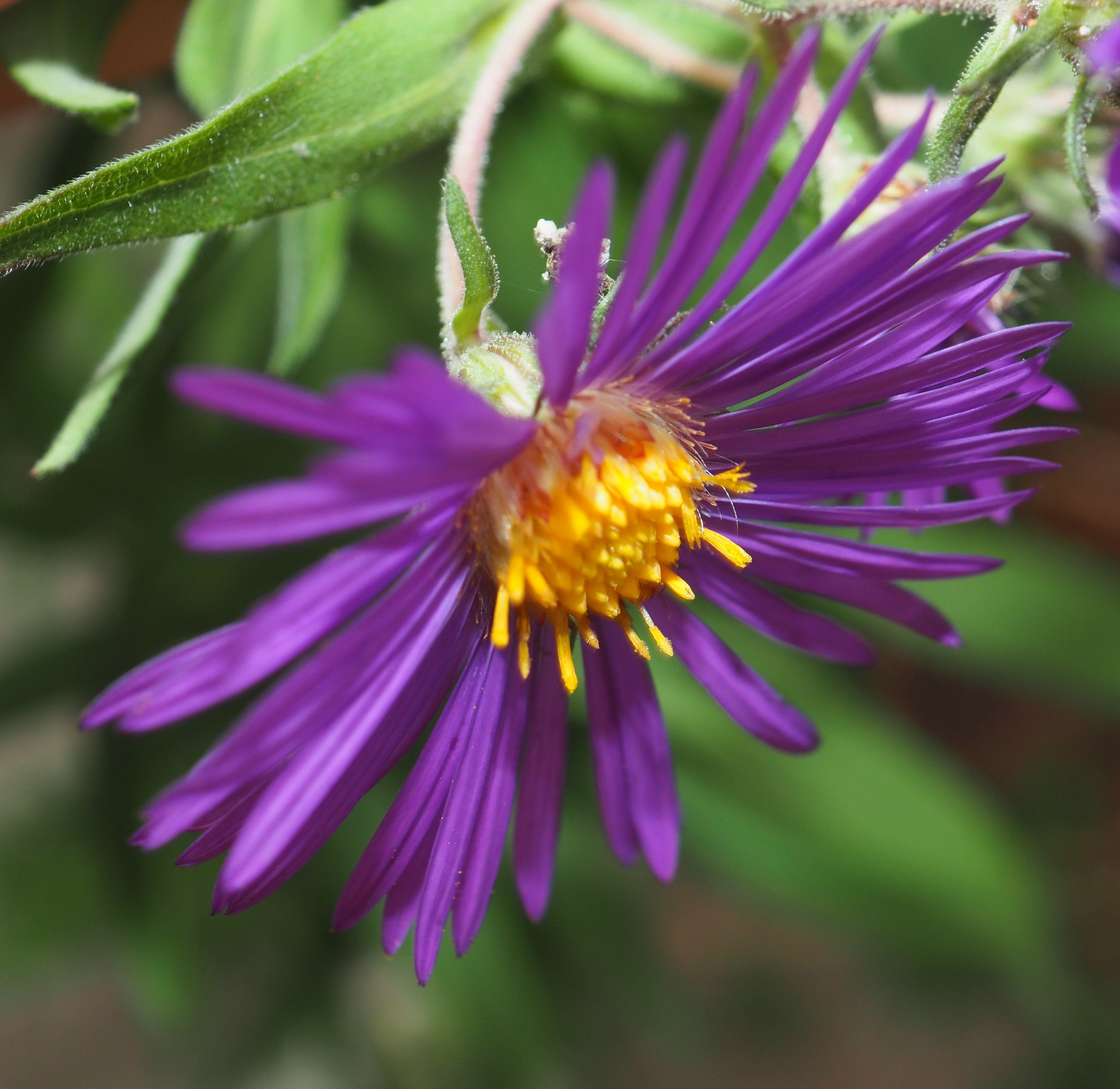
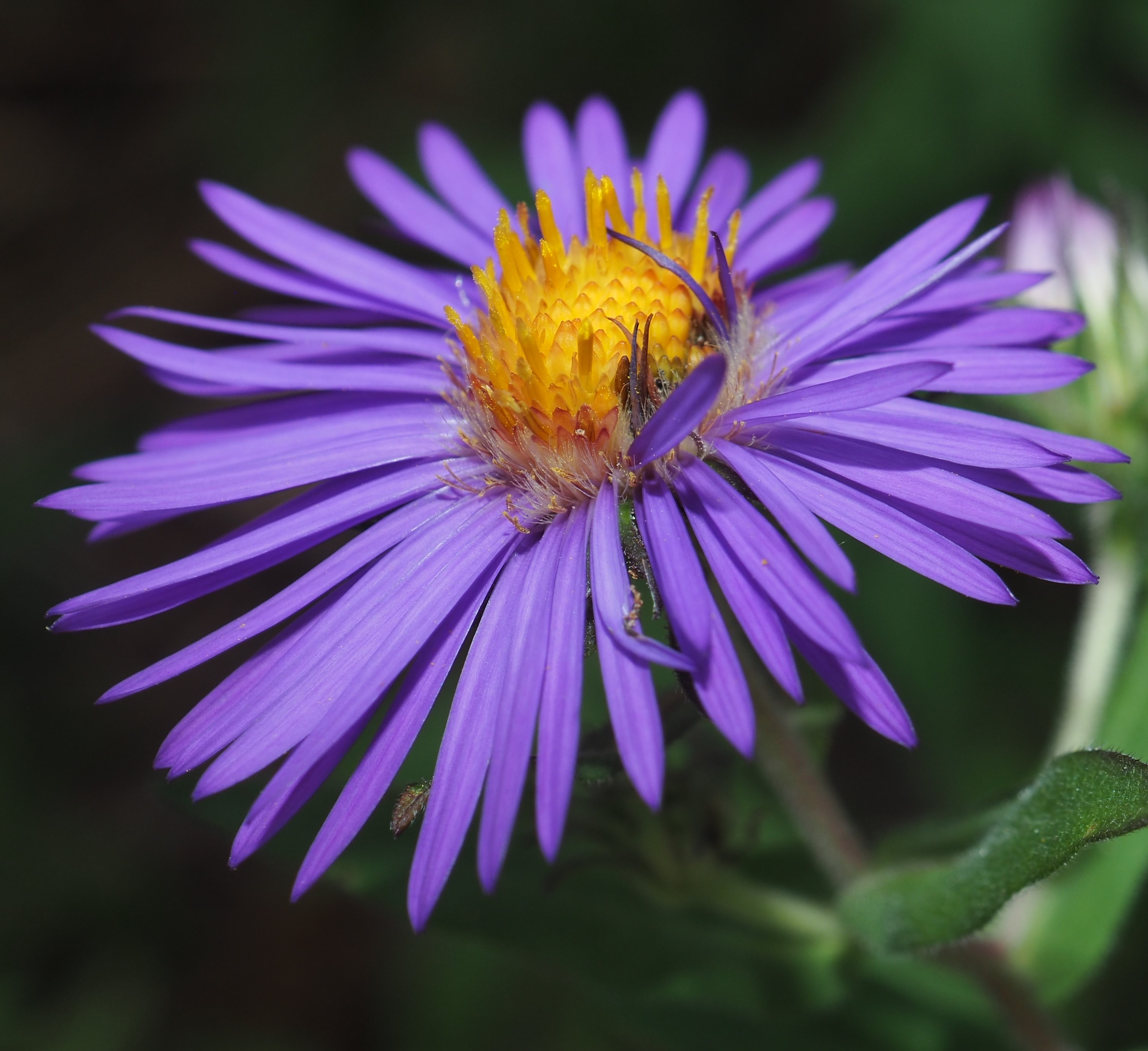
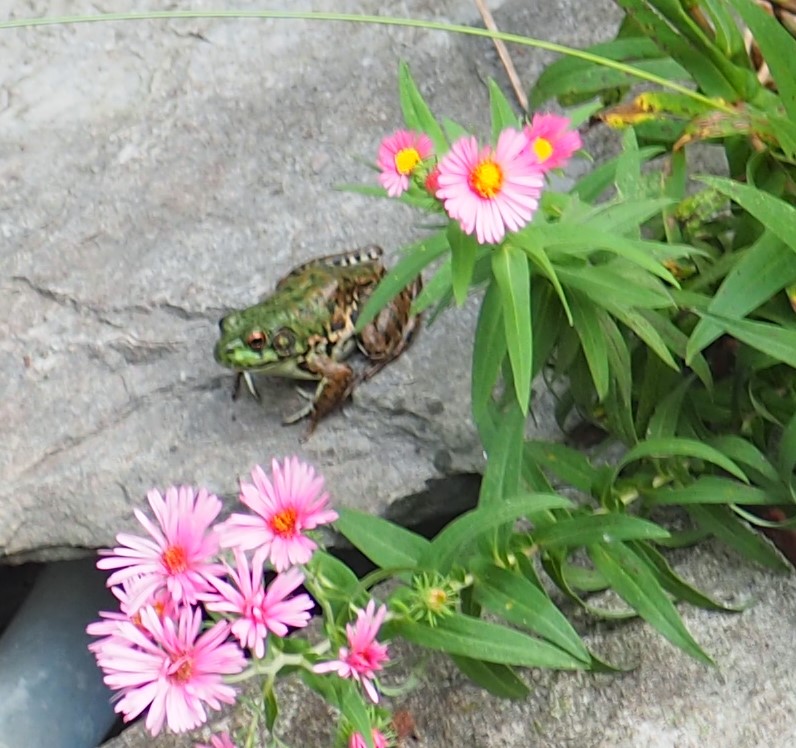
Remember that there is information in the name of the file for each image. You can see it by mousing over the image - look at the lower left of the screen. Or you can click on the image to get to the (usually) larger image. Then the info is displayed in the address line above. Sometimes the second click will actually display a different view of the original image.
You probably noticed a little frog sitting among the light pink asters above. This little frog always surprises me. Yesterday I was out admiring the pond when I heard a little "chirp"-like salutation. The little frog was sitting on a lily pad not too far from where I was standing. And as close to a smile as a little green frog can muster. So I repeated the "chirp"-word as closely as I could and the frog repeated it. We repeated this game for a couple of chirps each. Then I suppose the froggy was bored or had something better to do and gave up its (his? her?) game. I had been supposing it was a female since they tell me only the males chat like that. So maybe I'm going to break down and call her "him" for a while. The second picture is of the original Talky Frog, the one who once carried on a conversation with a friend on speaker phone, for quite an impressive time. By the way, "In the green frog, bullfrog and carpenter frog, the male's tympanum is larger than his eye, whereas the female's tympanum is smaller or the same size as her eye." This is from
This article. If you look at picture 3 (showing the middle frog the following spring), you will see the eye-to-typanum ratio spells "BOY FROG". The younger frog in the first picture is kind of indeterminate (to me), since the eye and tympanum are still about the same. Anyway, we have to look ahead to spring, to see what Miss Froggy turns into.
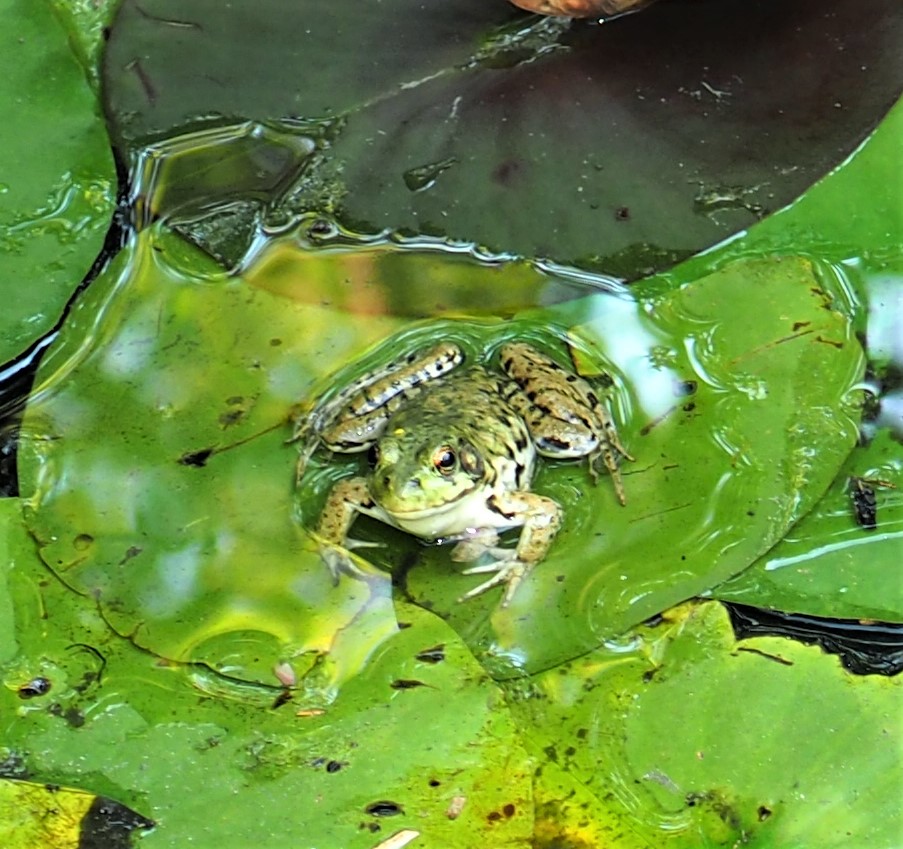
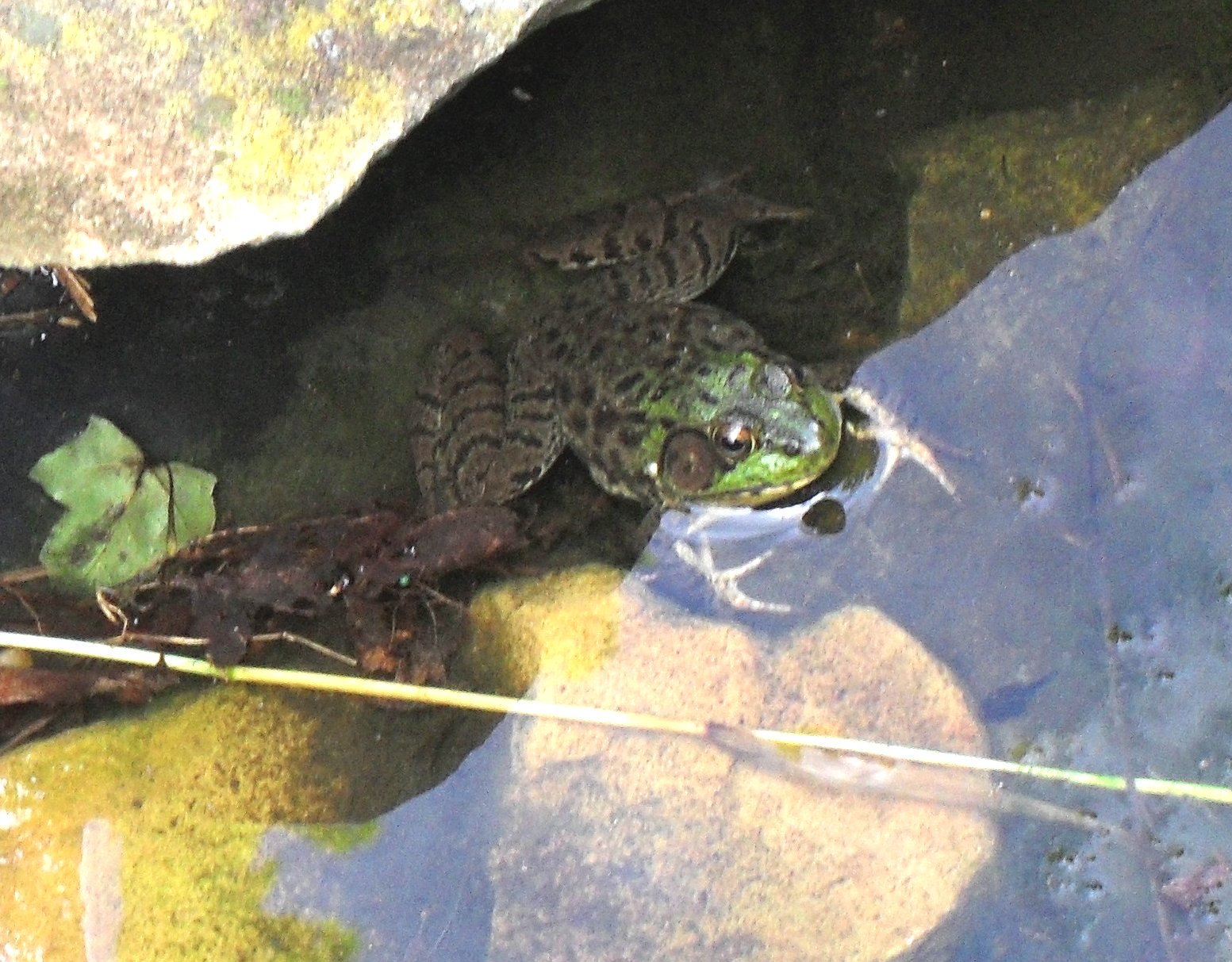
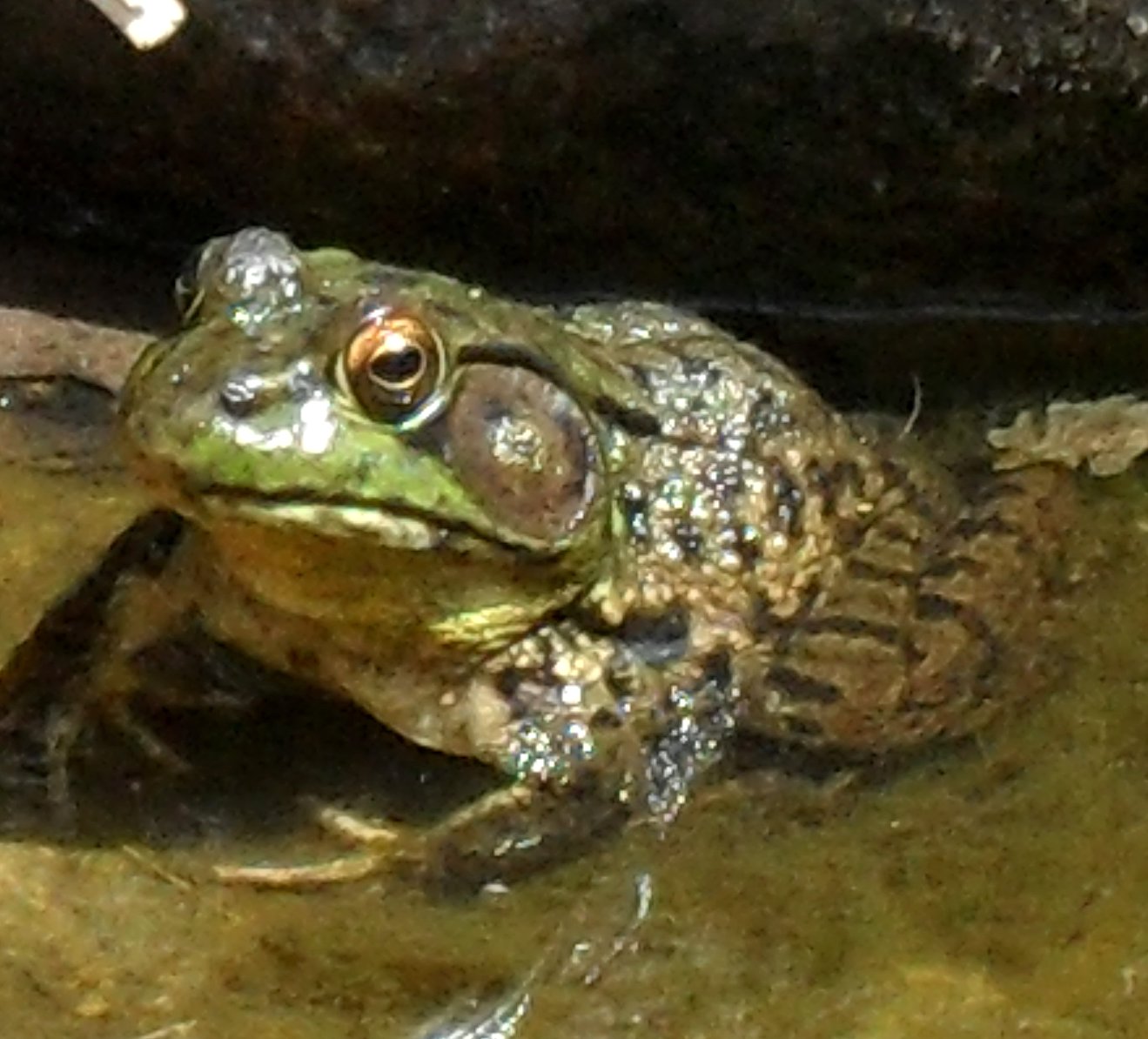
Let's see. No fancy ants. I did see one Barklouse, which was probably Polyscopus corruptus, but it was quite out of focus. This is one from last week. But this little Bee of Genus Andrena was a frequent flyer while the goldenrod was fragrant. There were all sizes of Bumblebees, this one an Common Eastern Bumblebee.
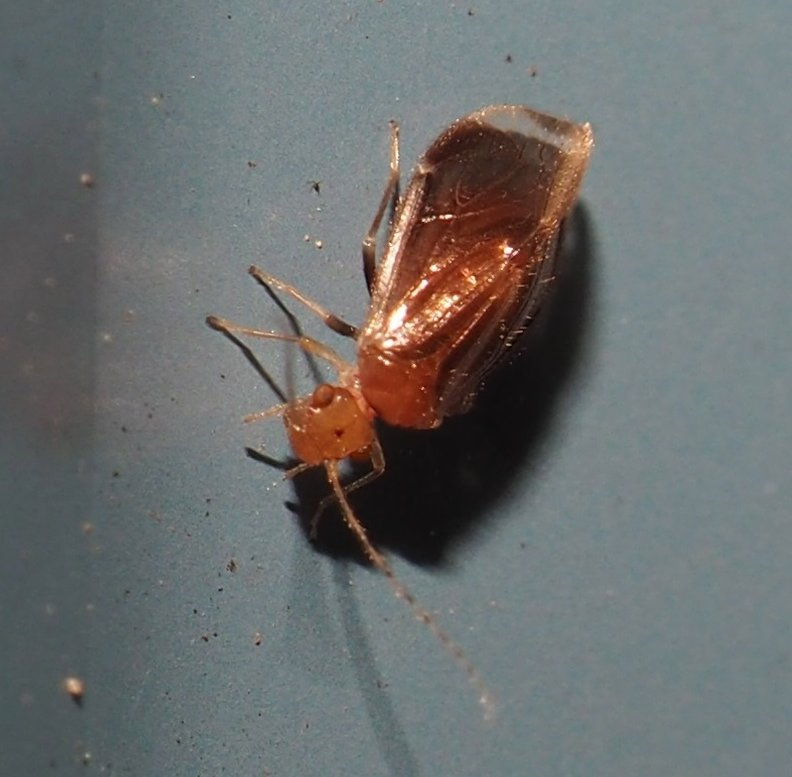

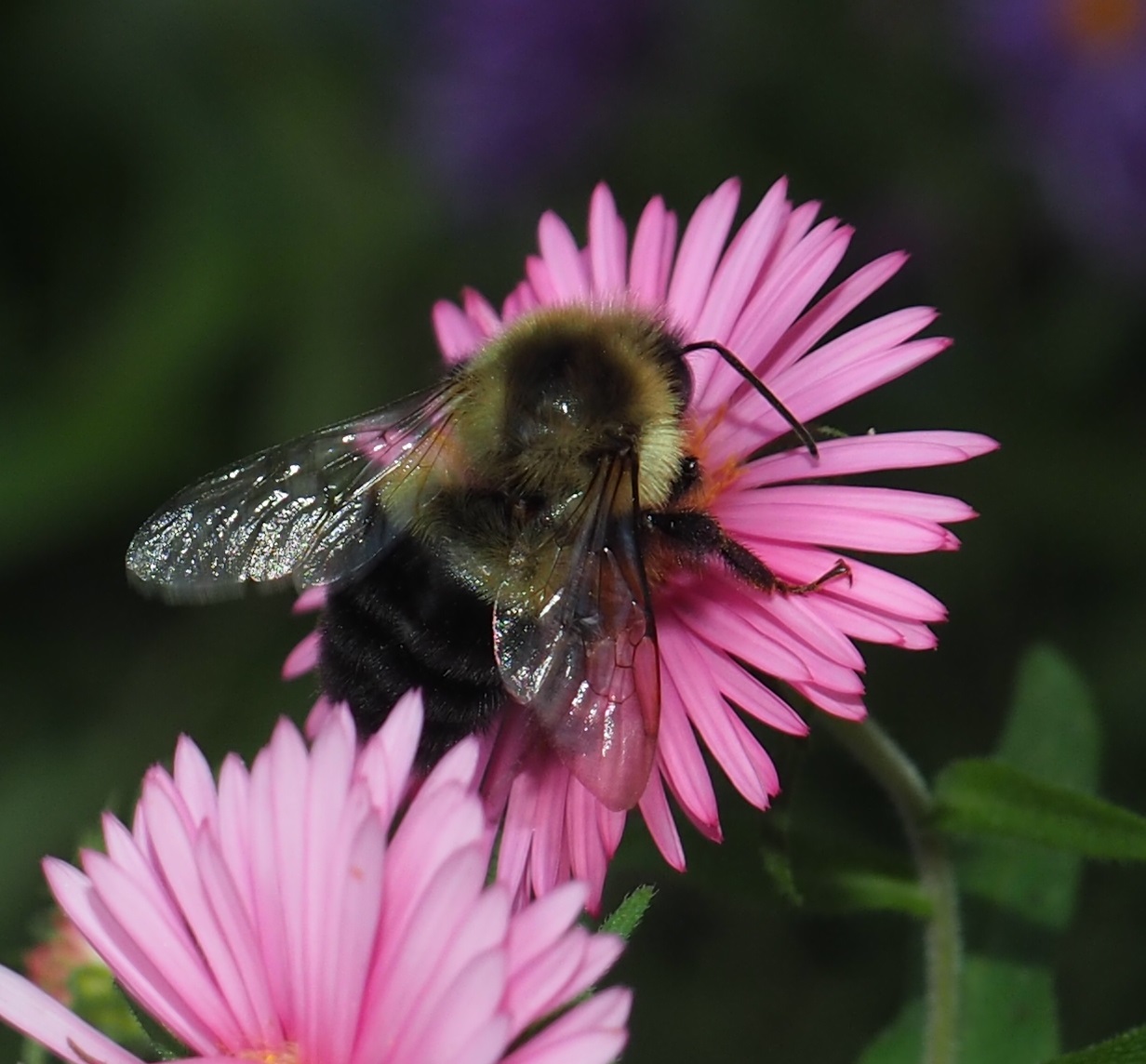
Do you remember the little brilliant blue-green Cuckoo wasps, like the first one here? I thought at first that number 2 here might be related, but I'm told it's a Small Carpenter Bee. See this discussion
on iNaturalist. It's so hard to try to outrun the amount of knowledge out there! Here's one of the little bumblers (#3).
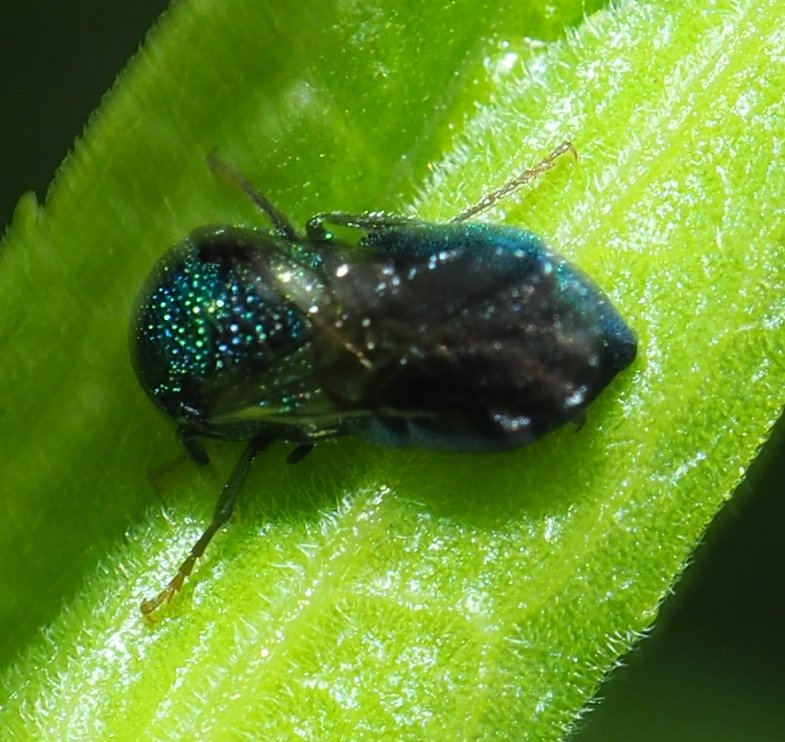

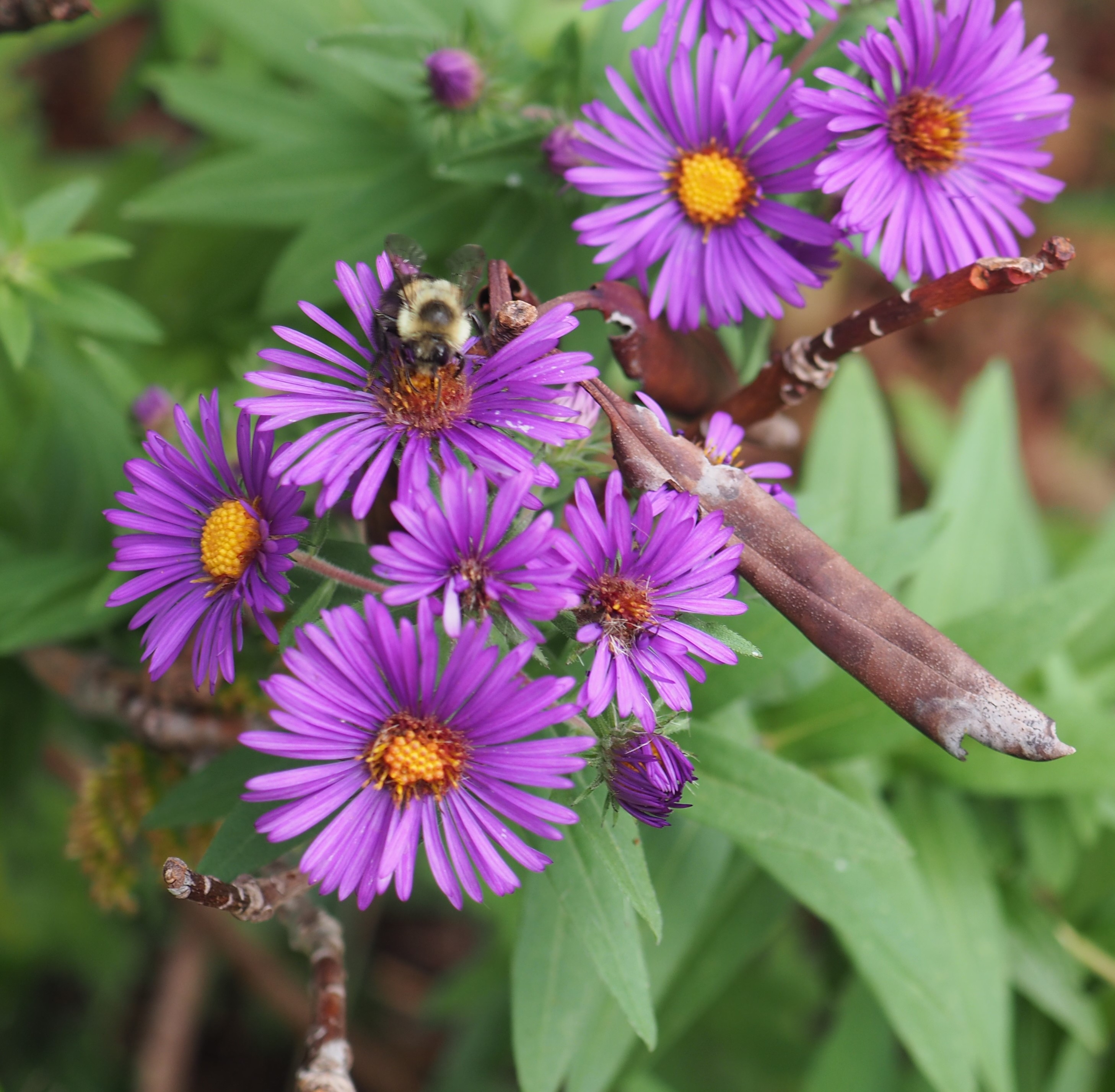
A few Beetles... We start off with a round little black Beetle. And then a Spotted Cucumber Beetle. I wonder if they show up on the goldenrod while it is golden yellow just so it will match! And of course an Asian Lady Beetle. I wonder if they are going to have another bumper crop this fall. Remember last year's?

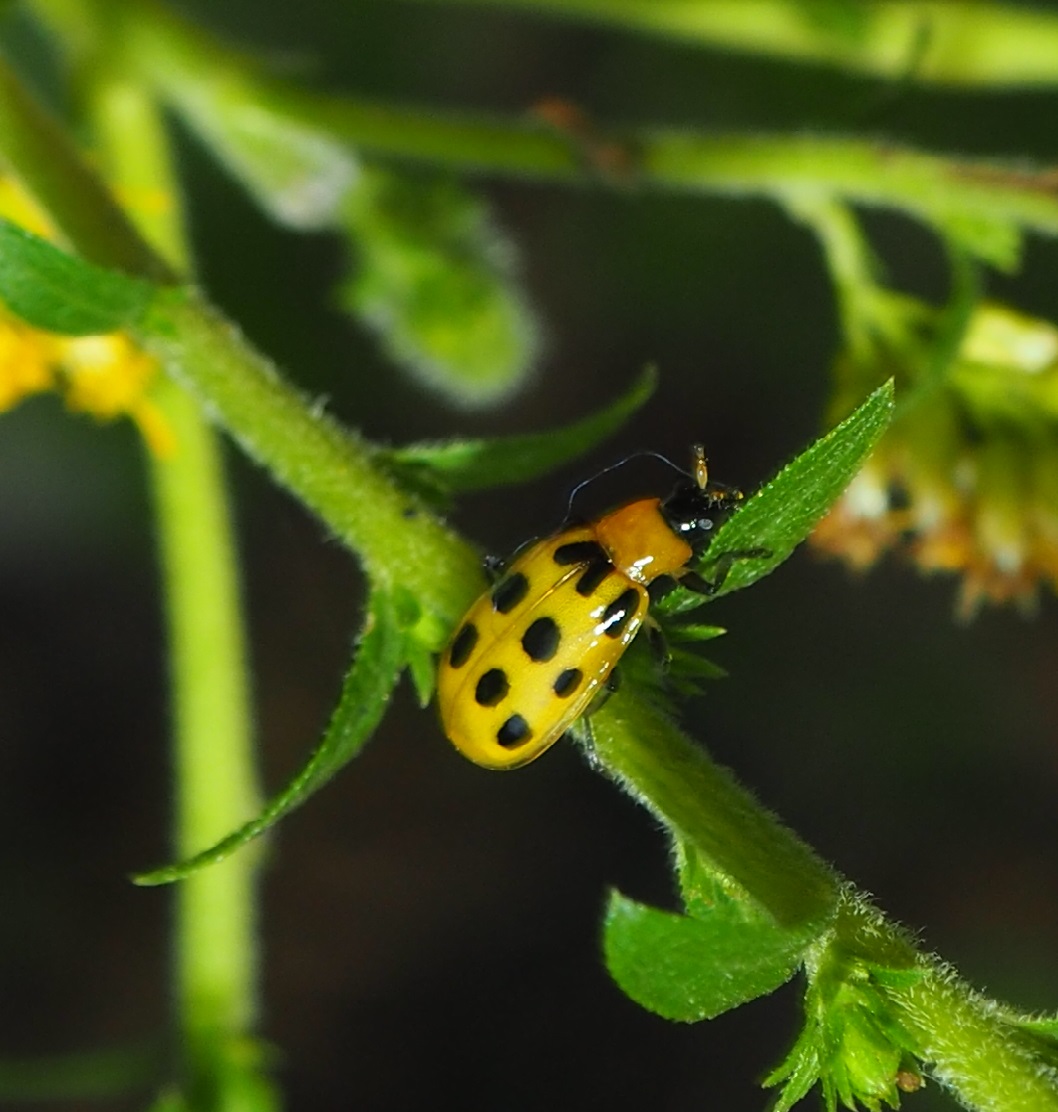
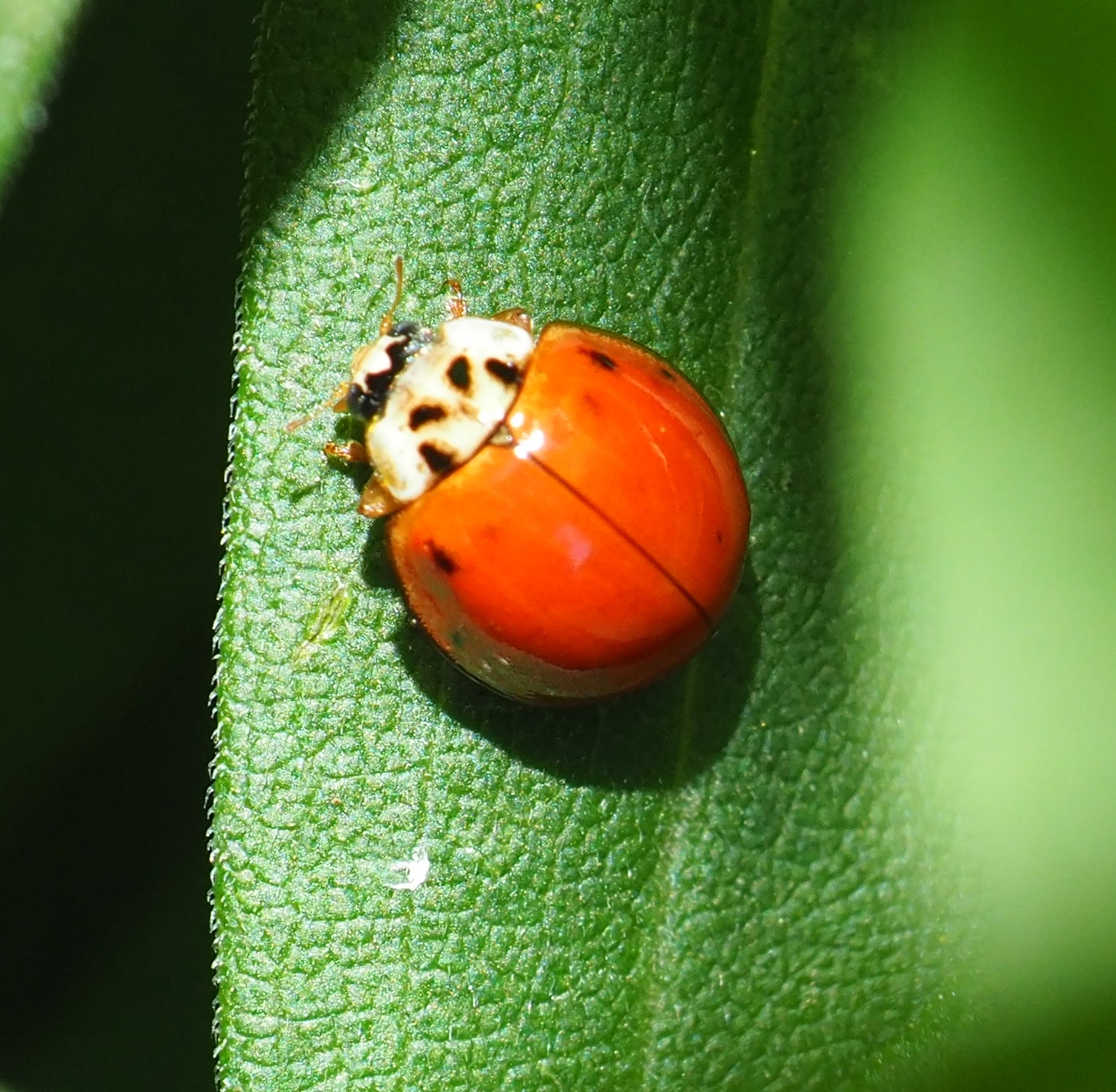
Here's another little black round beetle. Picture #2 seems to be a Rove Beetle, since its hard wings are cut off in the middle. And Picture #3 is another tiny black beetle, but this one with a red spot on both wings. The fourth beetle is a tiny redbud bruchid in a pretty pink aster. There also seems to be a tiny ant or bee in the center of the flower. Who knows?
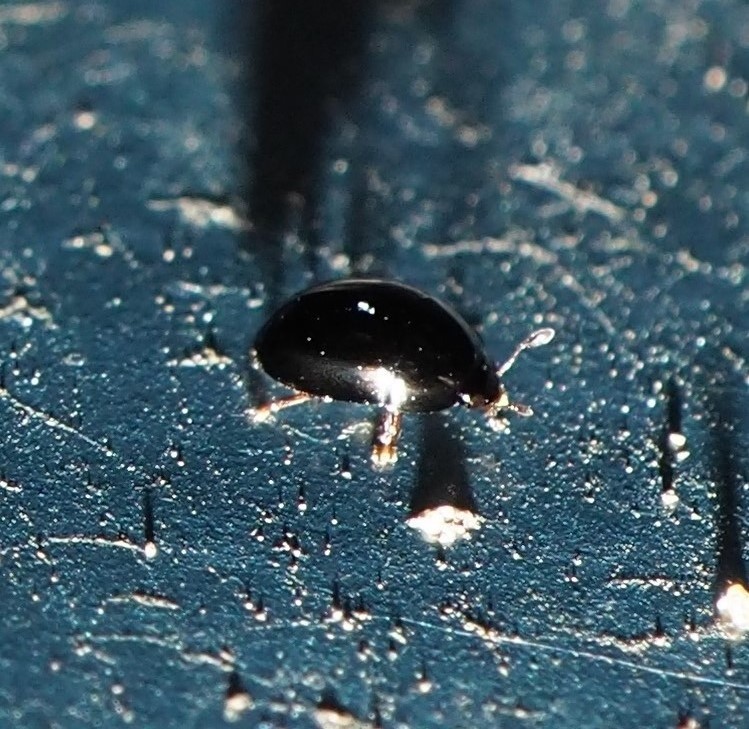
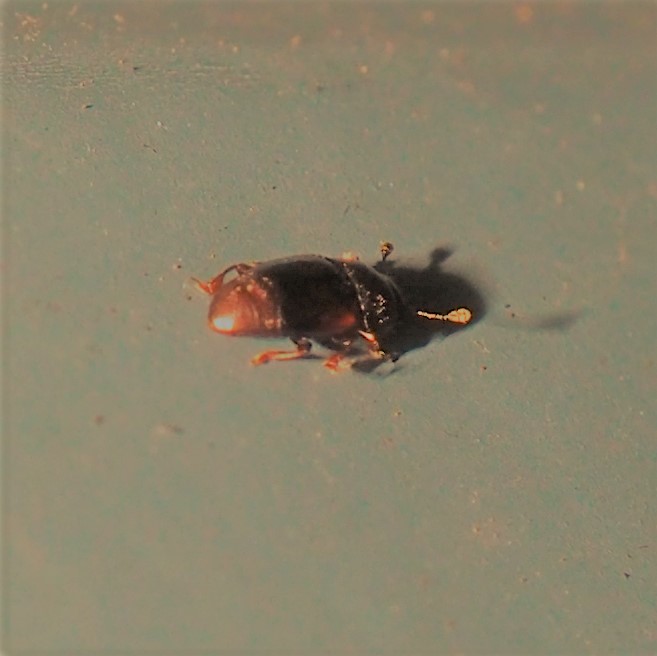
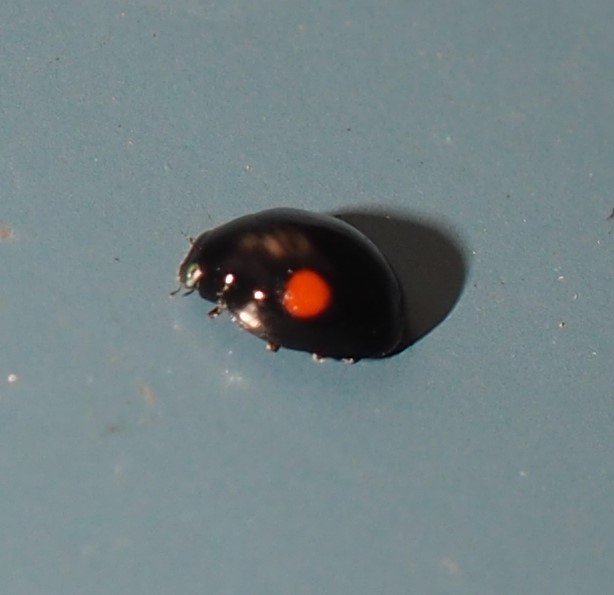
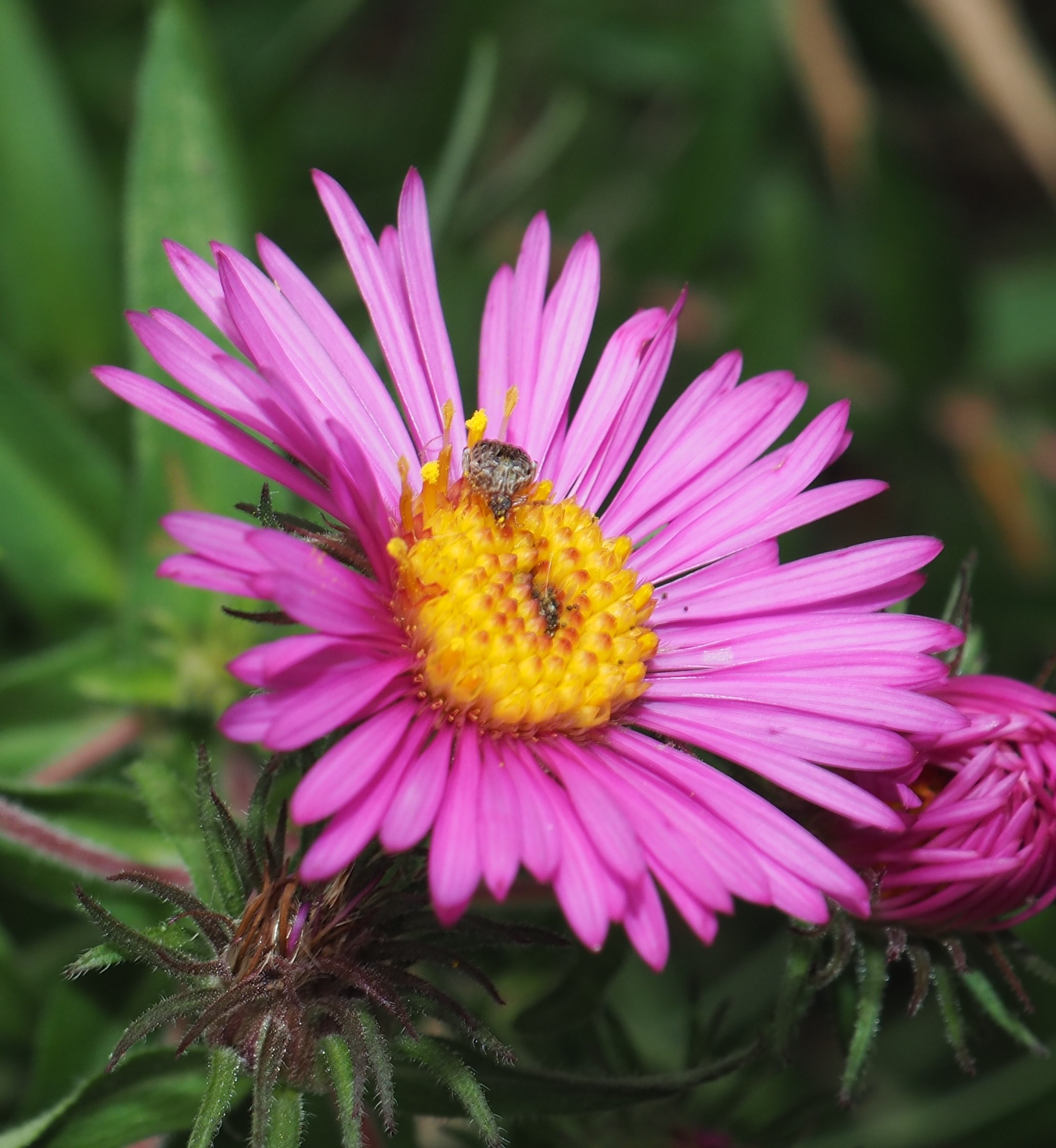
Well, here we are in Bugland again. Among the Leafhoppers, the first one is a lighter shade of grey/gray than I've seen. The second is in the genus Eratoneura, which is unfortunately a quite common genus. But the third is an old friend, the leafhopper in the Graphocela genus which specializes in mixing reds and greens or reds and blues. Number 4 is a sneaky trick. Doesn't it look like a leafhopper (except for not having spiny back legs for leaping)? Apparently it's because it is NOT a leafhopper, but a Planthopper.

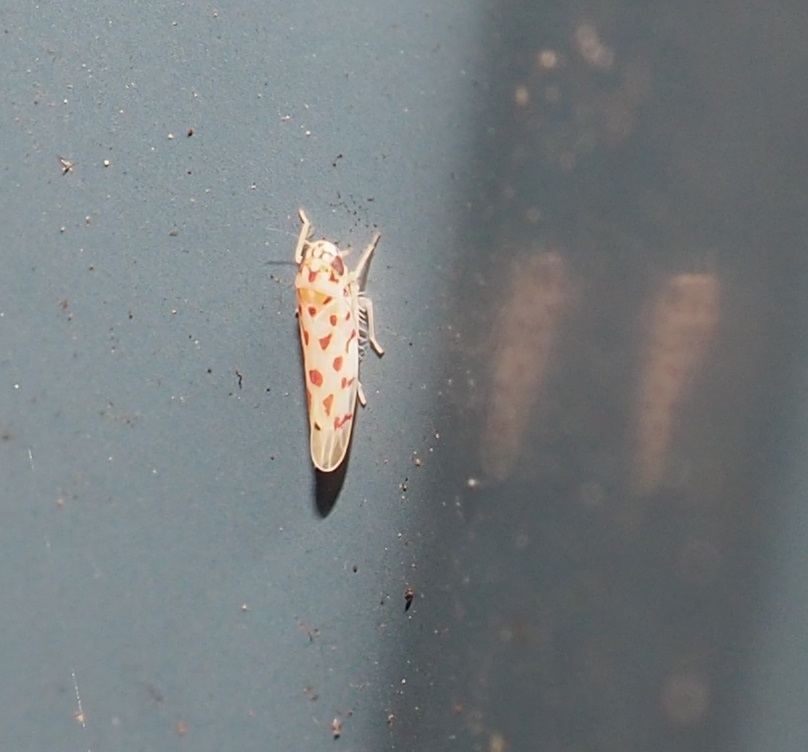
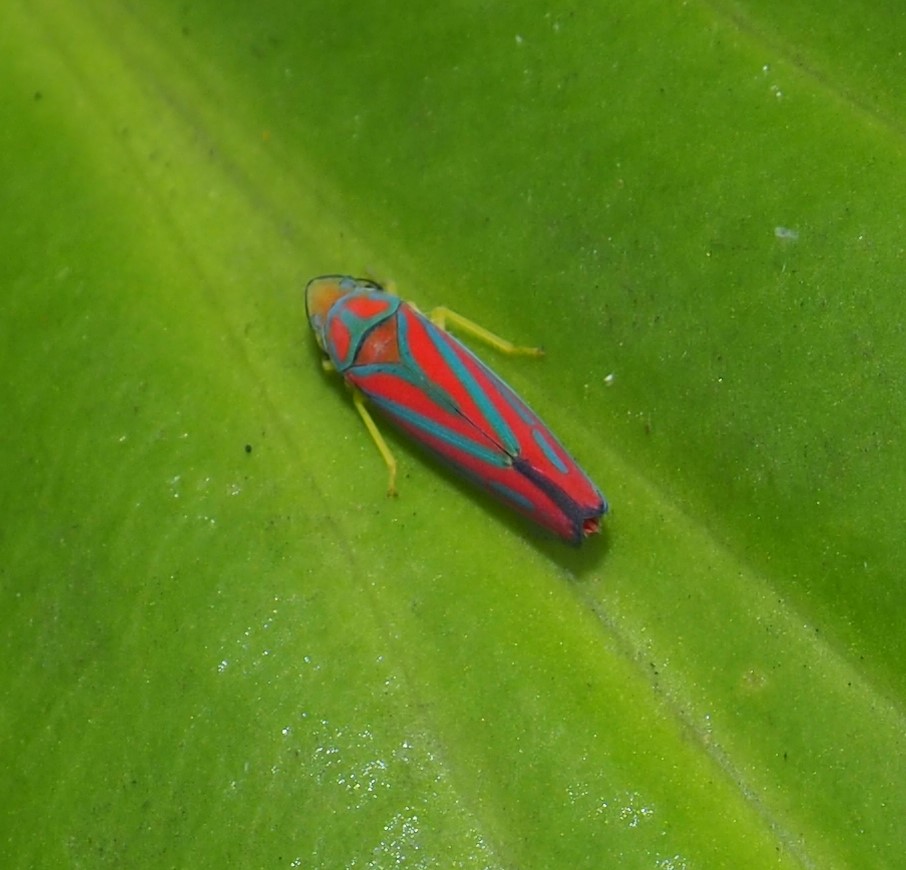
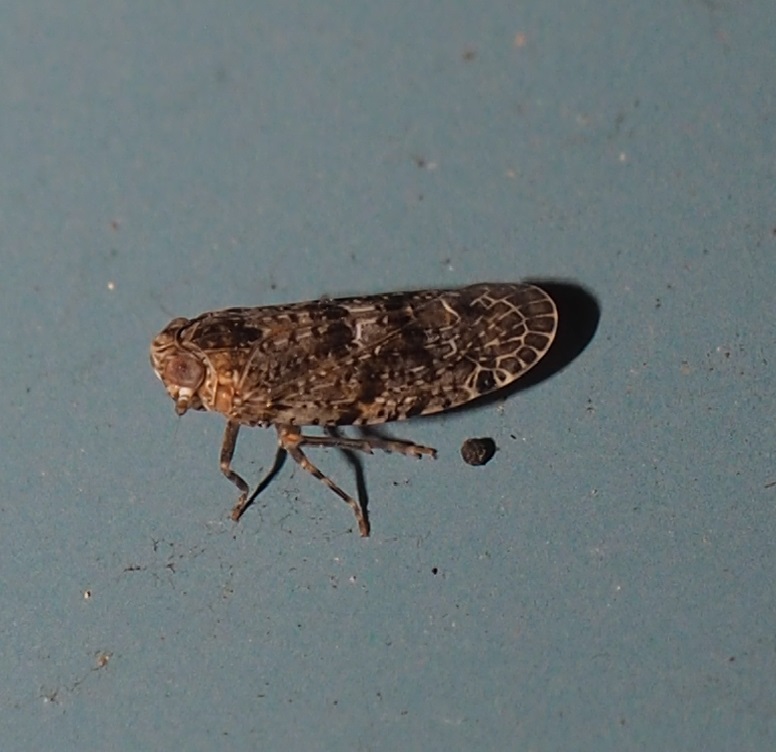
This has been a good year for Plant Bugs, and this first one does resemble a Lygus Bug. Second is also probably a Lygus Plant Bug. Third is a different kind of Plant Bug, namely a Scentless Plant Bug.
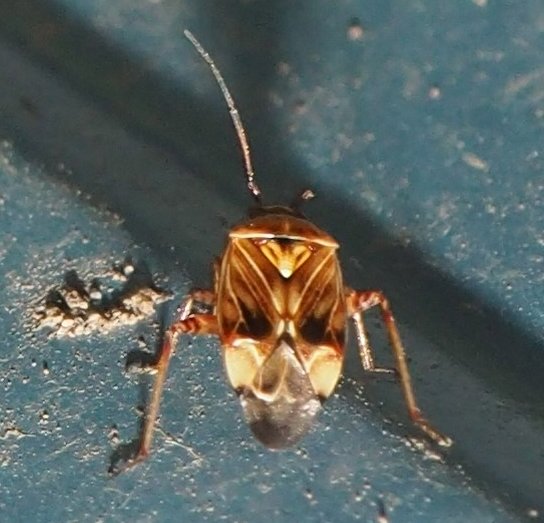
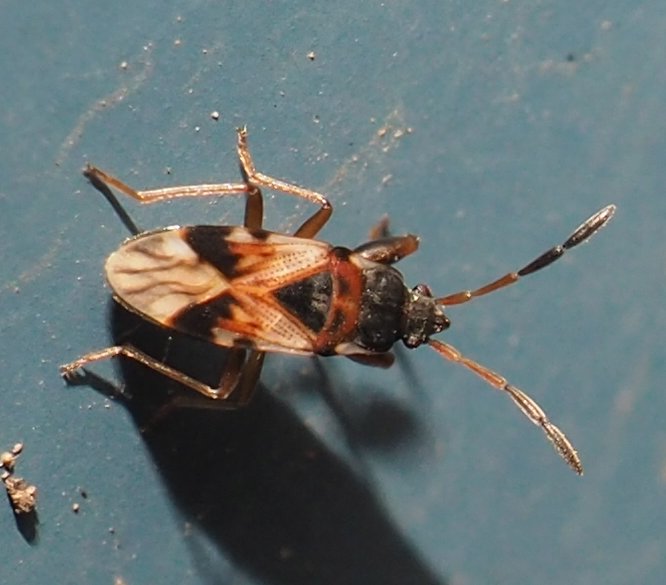
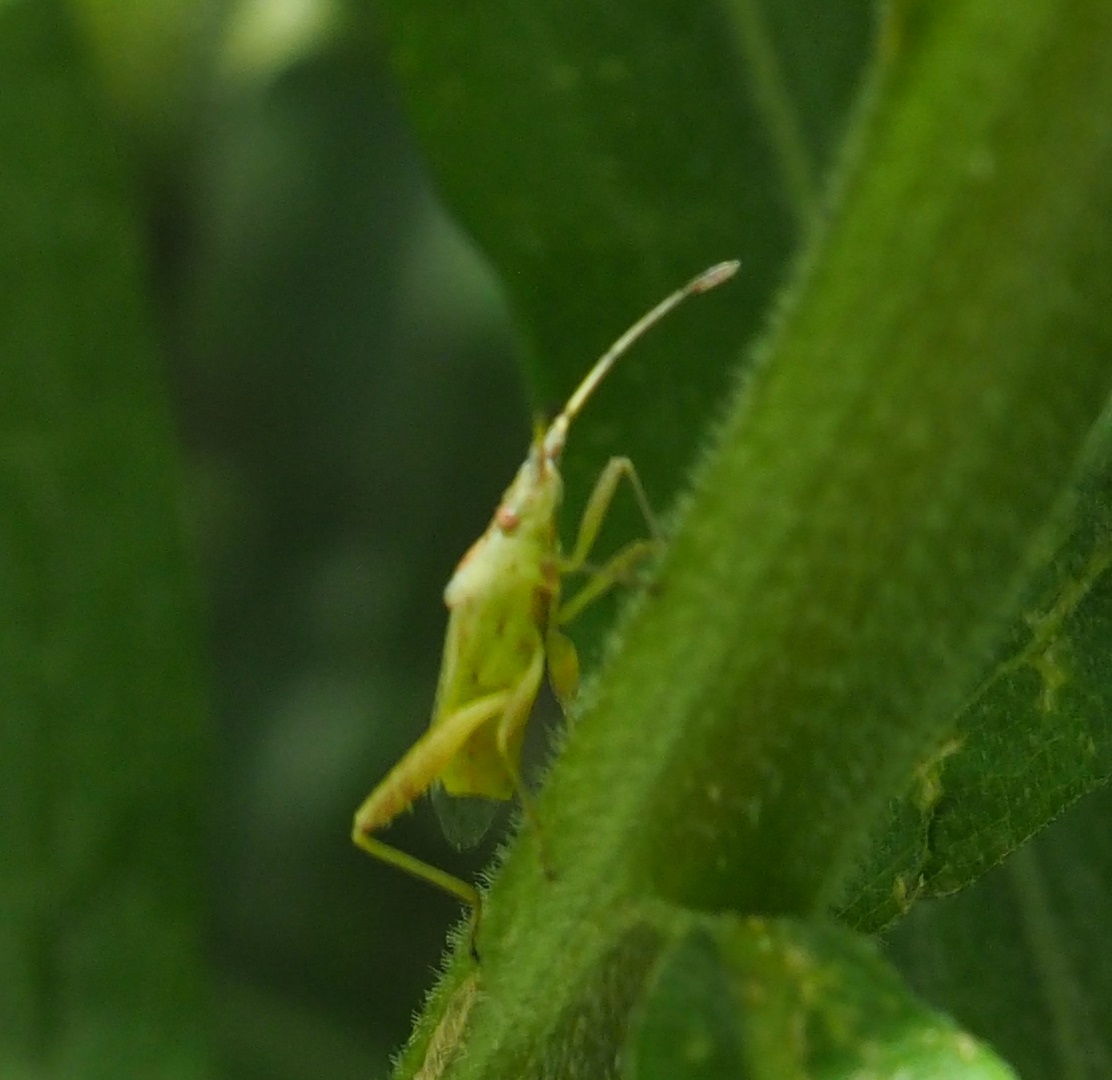
These first two bugs seem to be Plant Bugs. (Second is another example of a Scentless Plant Bug.) The third is a Horned Squash Bug, from a completely different arm of the Bug Family Tree. If you click on this beetle twice, your eyes may be good enough to see two TINY prongs (horns) just south of the eyes. They're even harder to see because they seem to blend in with the base of the antennae. PS:I'm in debt to a person called @wongun on iNaturalist.org for identifying the Scentless Plant Bugs in this section and the one above.

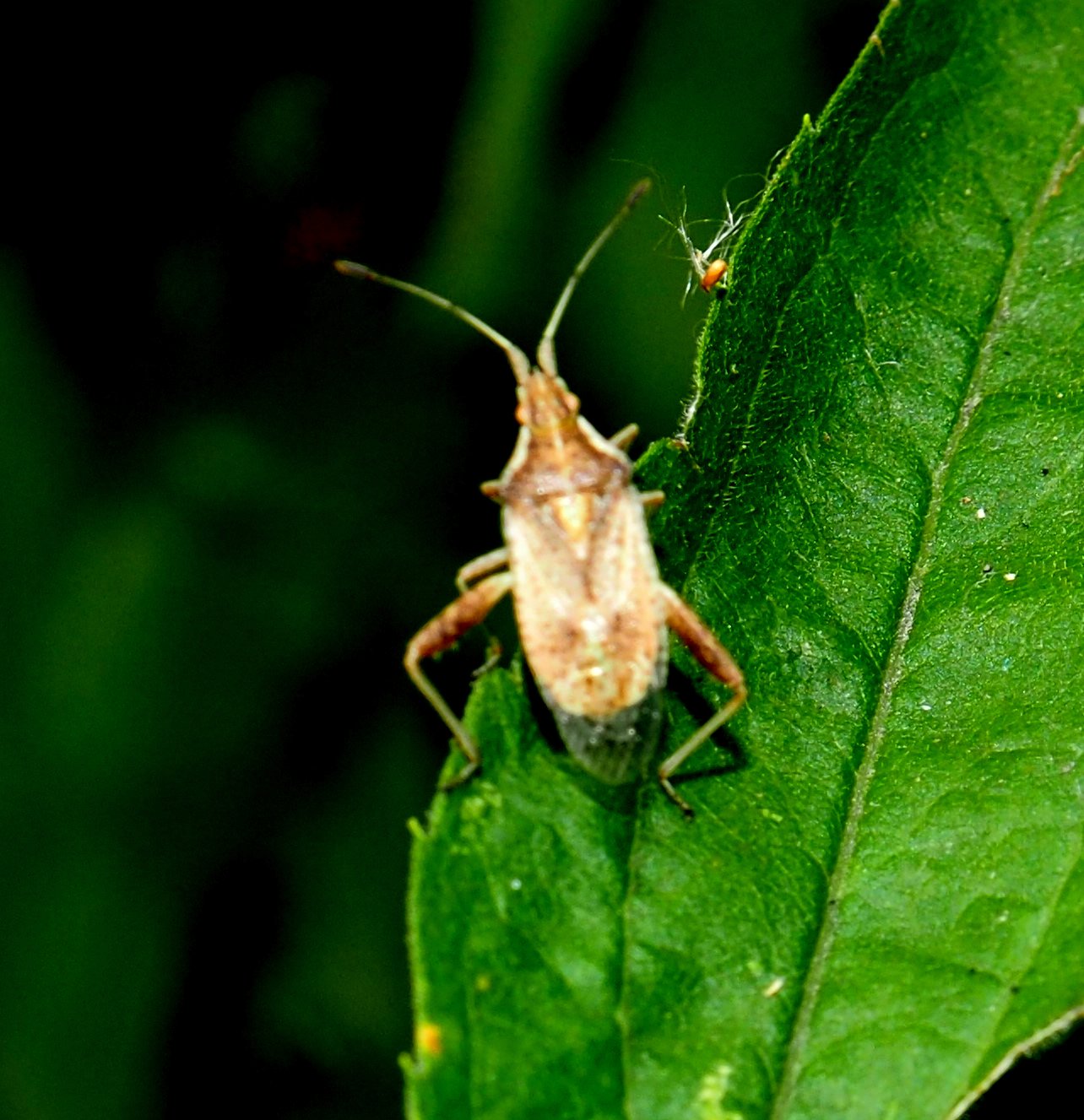
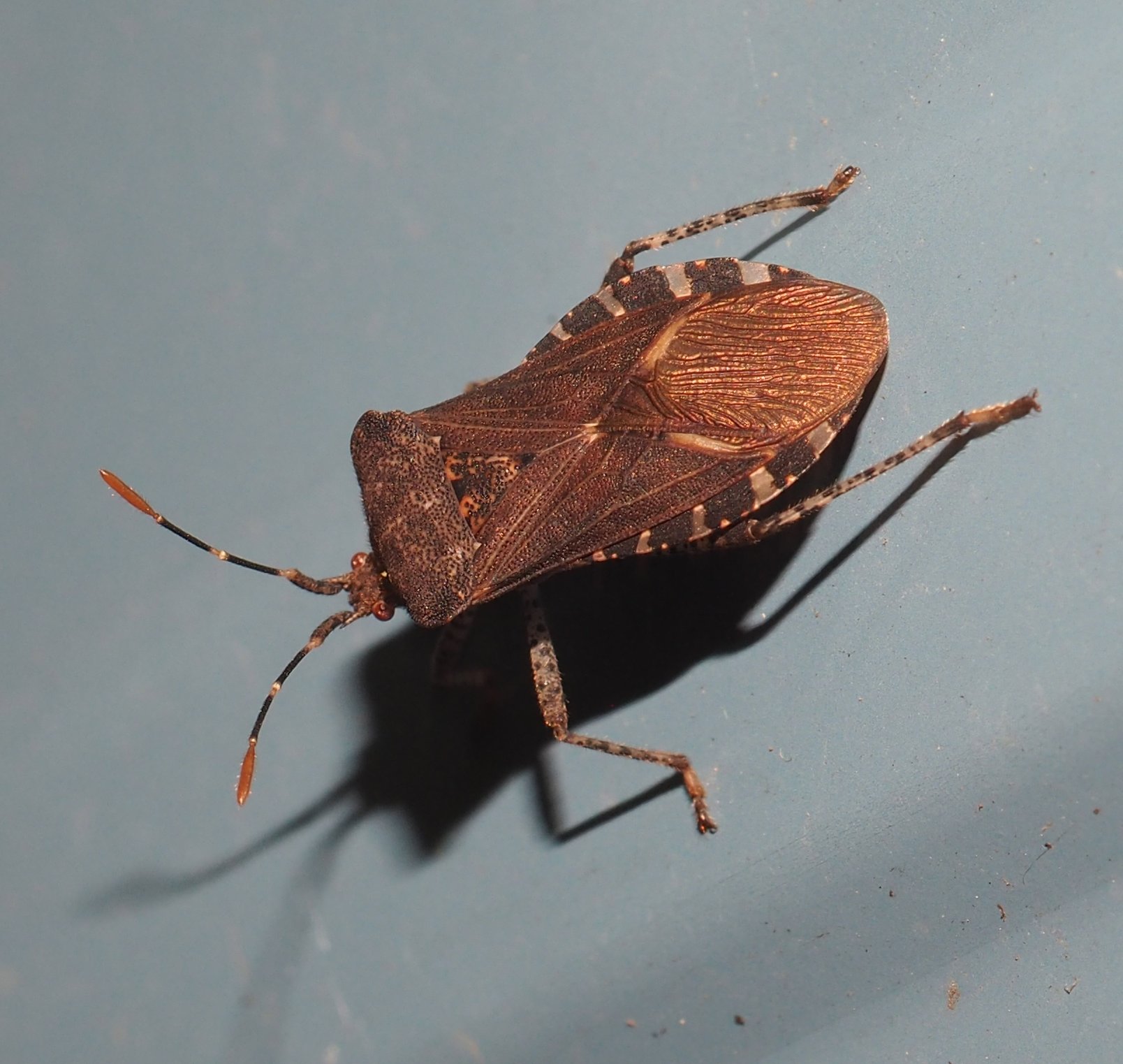
This first bug is the ever-popular Stilt Bug. Note some resemblance to the stilt bug from the slightly fatter one in #2. I'm not yet sure what it is. Third is that reddish Stink Bug. What a faithful friend!
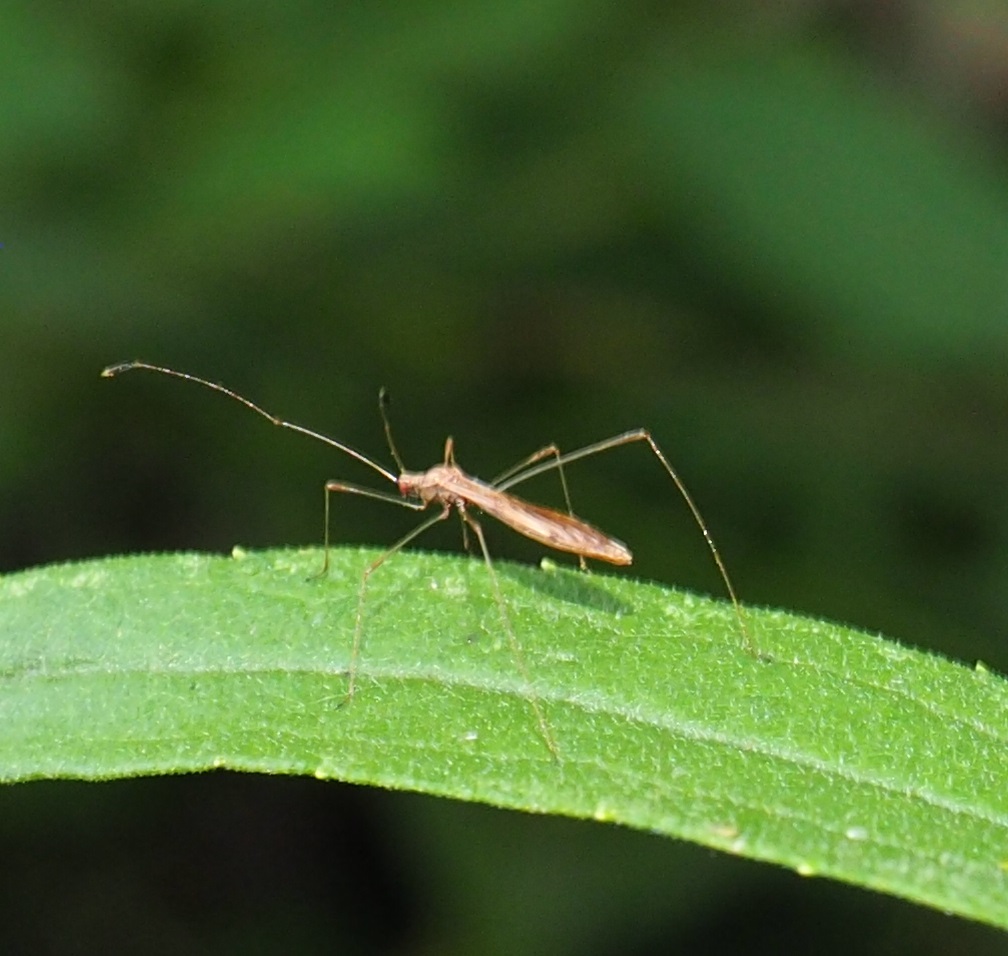

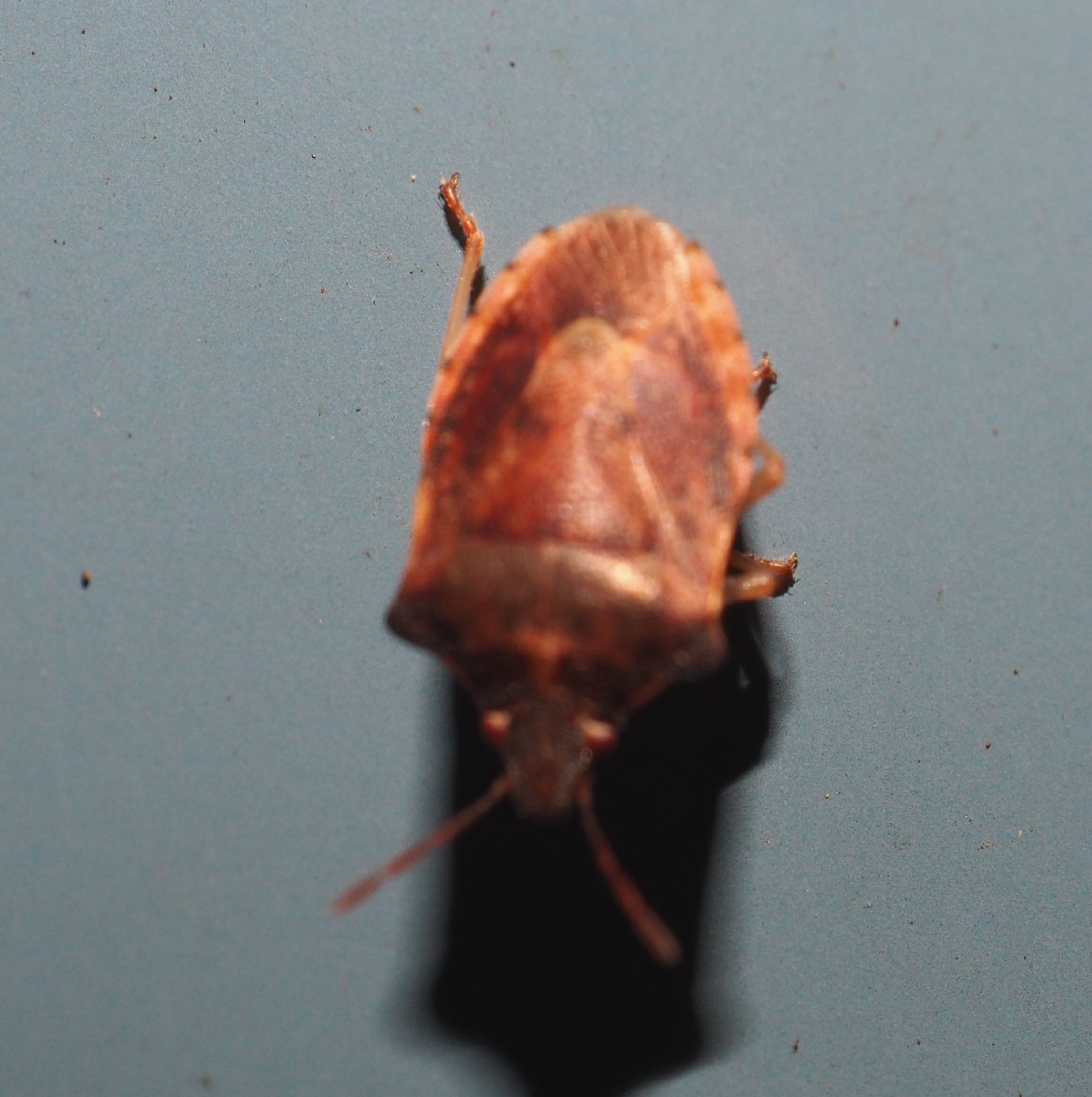
Can you believe I didn't see a single instar of BMSB this week? But the next B on the list gives us the Cabbage White Butterfly (a bit flattened because it was hanging on at an angle). Their larvae can really do in a crop of plants related to the cabbages, but the old folks love the nectar of the Aster family. Now that we've broken into the Lepidoptera vault, I'll continue with a few moths. Creature #2 we saw fairly recently - it's a yellow-necked Scape Moth. Third is a tiny moth hanging under a plant. Last is a little tiny caterpillar (measuring worm) of a Geometrid Moth. It's called (cat and adult) a Common Tan Wave. This very Fifth one looked to me to be some kind of Flower Beetle, but someone mentioned, "Look at the antennae. Beetles do not have those smoothish antennae." This particular one also has bristly-looking "feathers" on their rear legs! It seems they grew a fly for trolling for fish. An odd duck indeed!
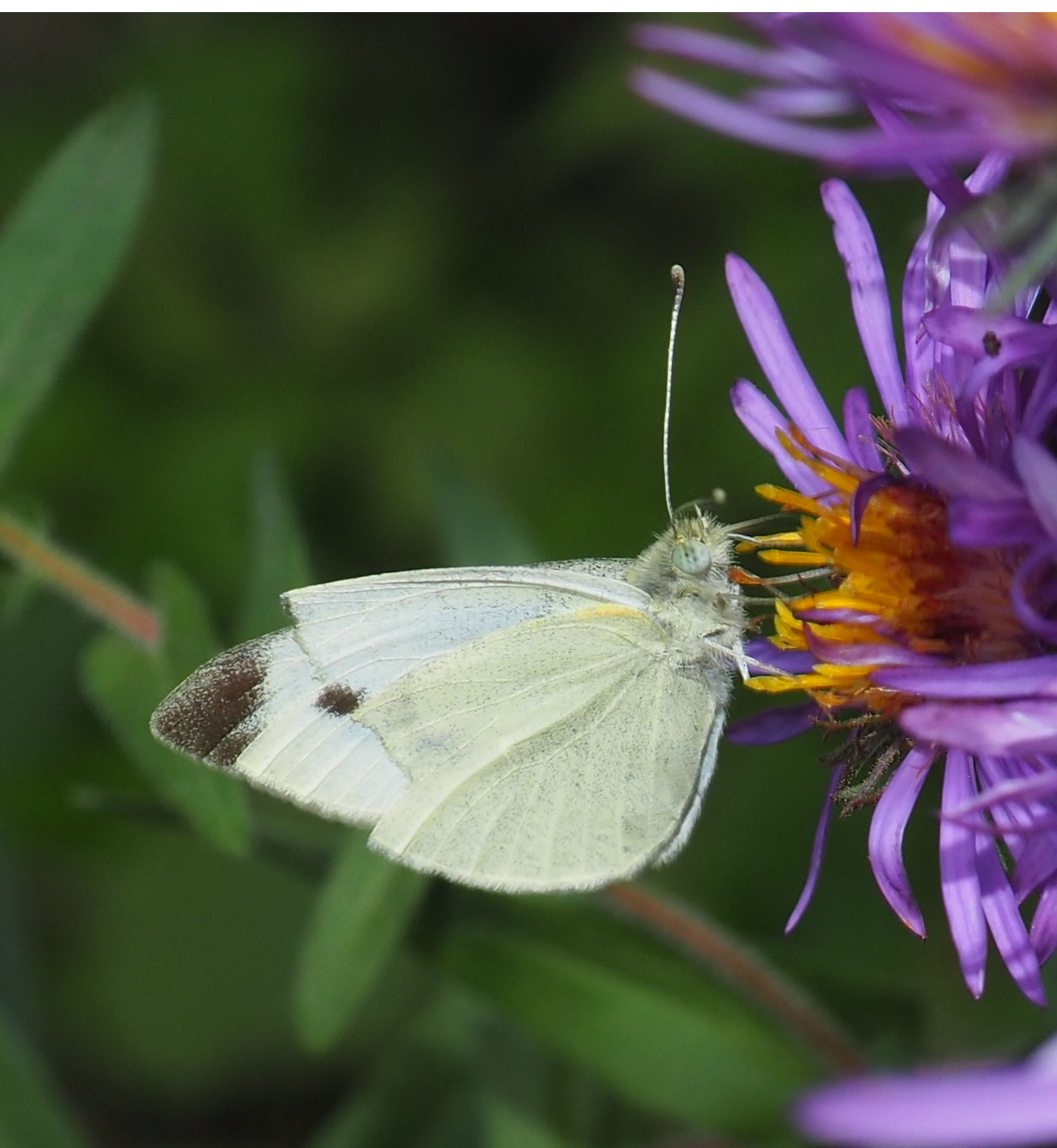
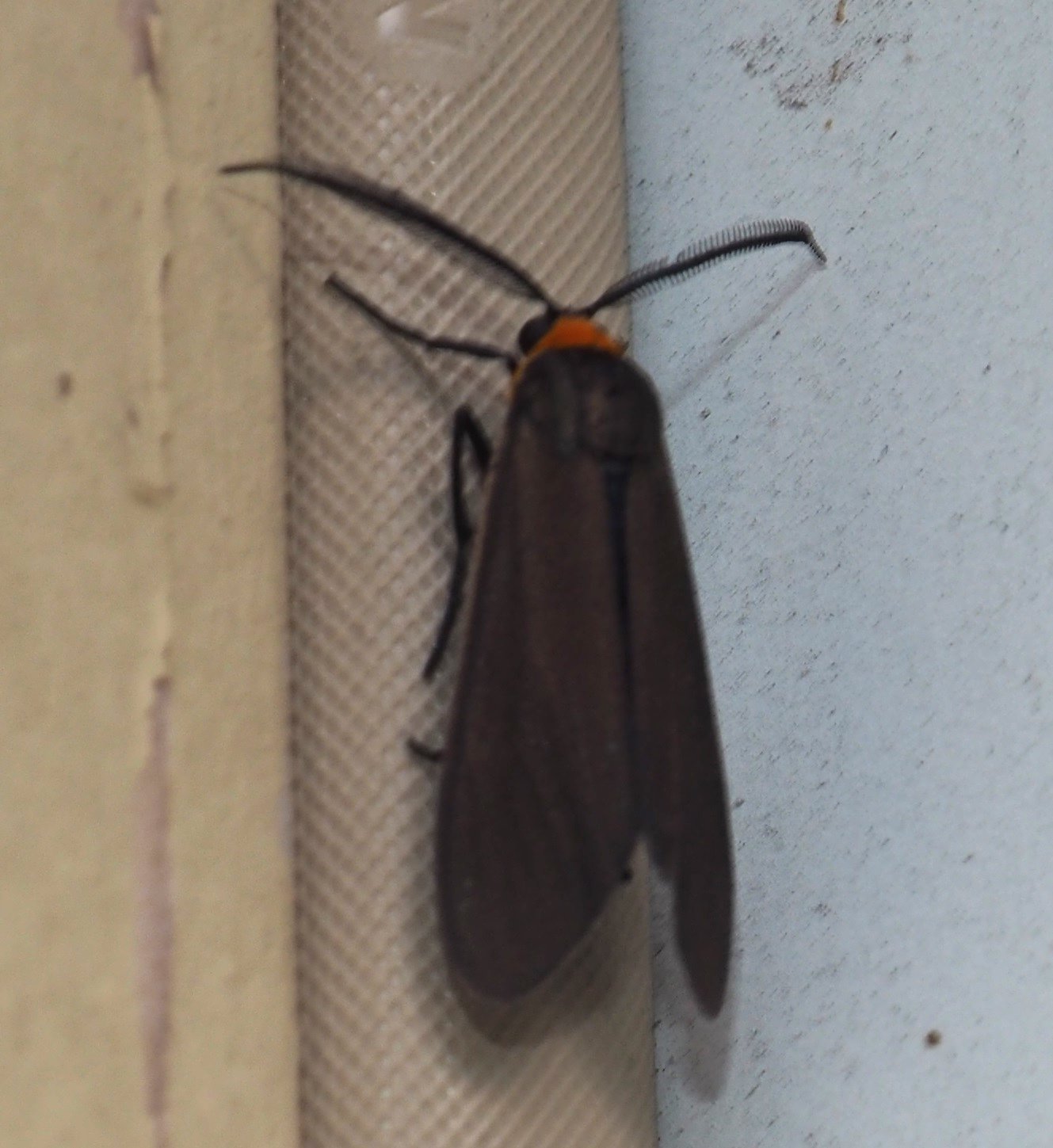



One little Earwig and then on to the Flies! Number 2 is a fierce-looking black fly; Three is our ubiquitous Blue Bottle Fly. I never noticed the big black eyes on the fourth image, a gall midge with long legs.
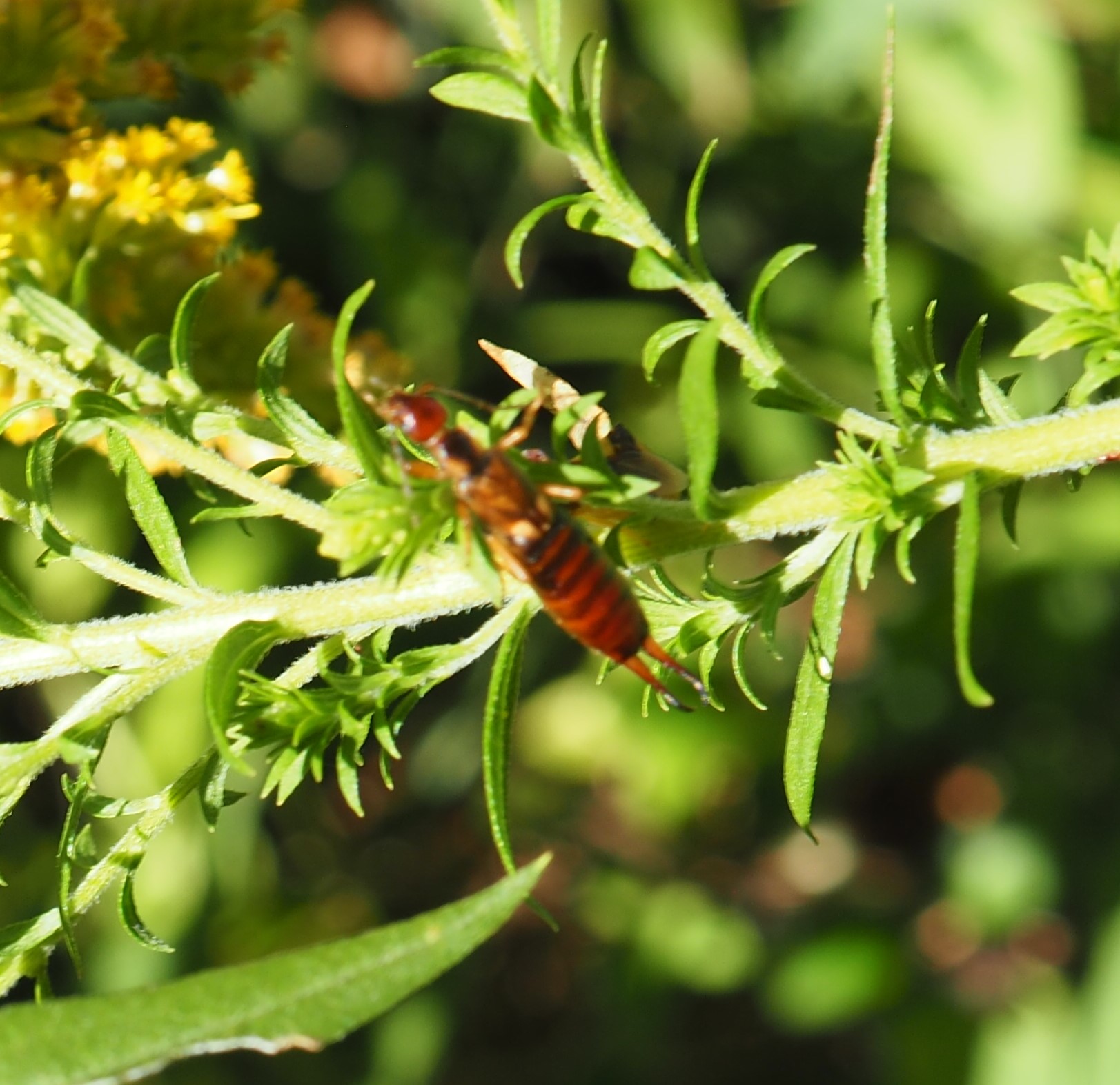
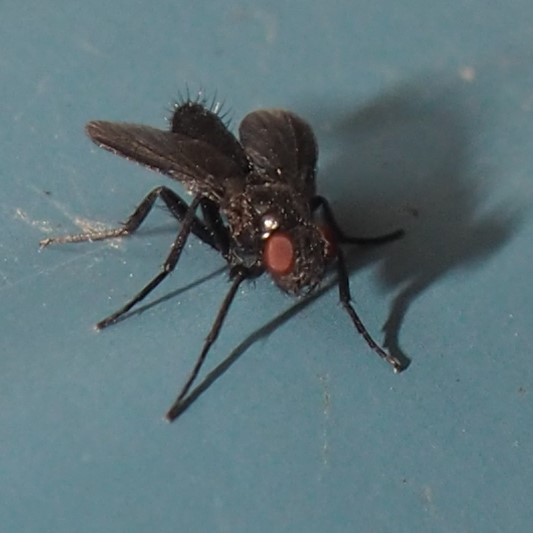
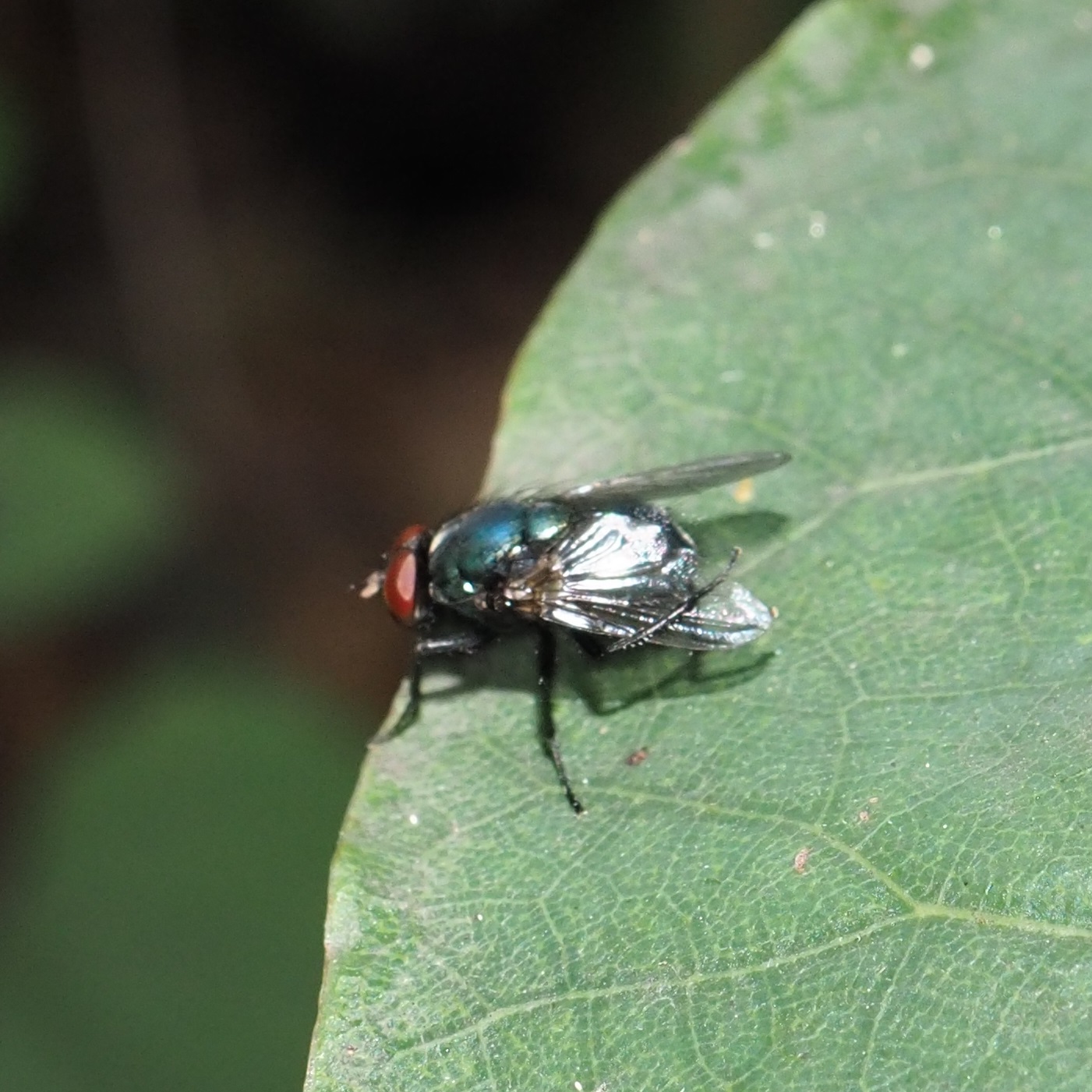

Here are a few Hover Flies. First is our oft-spotted Toxomerus geminatus. Second is a good bit larger fly called Eristalis transversa. This one is a female- I didn't see any males yet, but here is one for old time's sake (2015). I did see when I had no camera on me one of these nice flies of genus Helophilus (love that sun) on an aster flower. So Picture 4 is also a dip back into the vault from October 2017! I must keep a lookout for it.
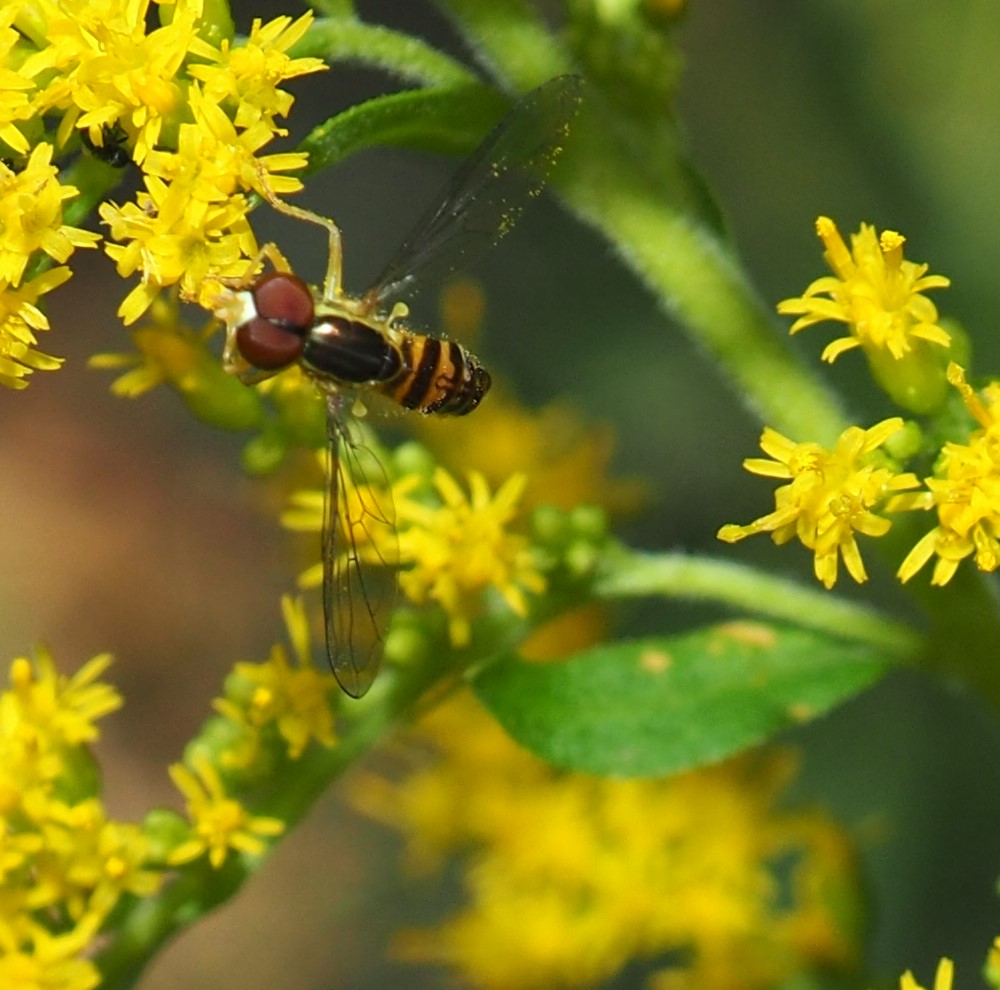

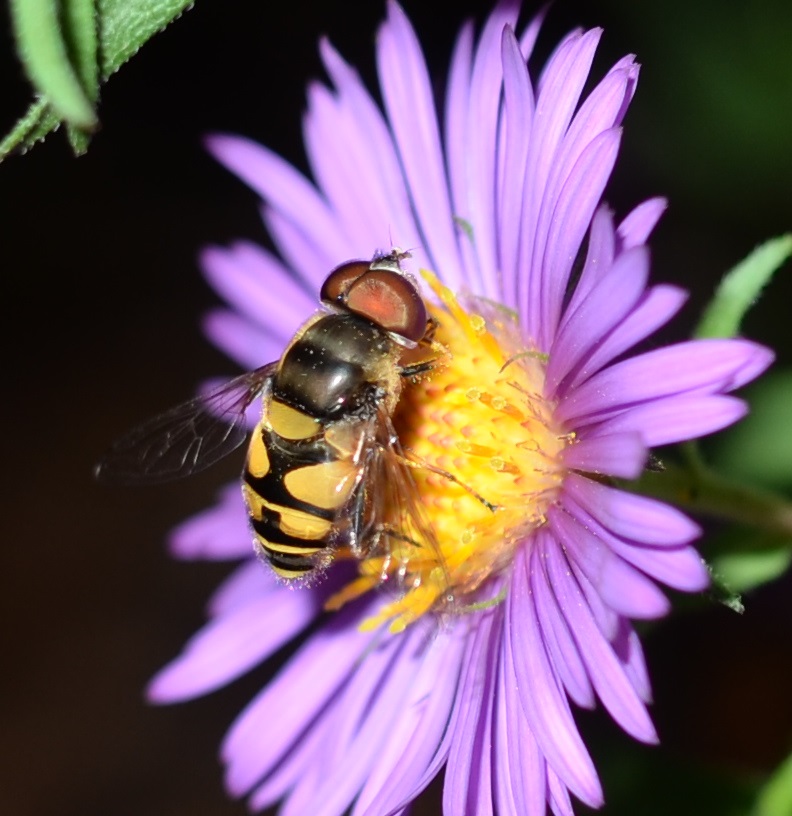
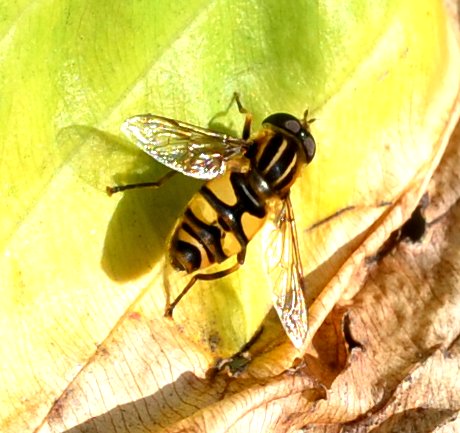
First up is a sleek Moth Fly. They are all over the place right now. Second looks like a miniaturized Root-Maggot Fly but is actually very tiny, if memory serves. (The leaf it is on is from a very large Hosta.) Third looks a little like the real Root-Maggot Fly, but lacks the deep yellow of the wings. Fourth is a very tiny fly, one we see often. But fifth was in the process of getting outta here (see the wing position) and so I missed that picture. But since this is the end of the flies for this week, I'm cramming it in at the end of this row.
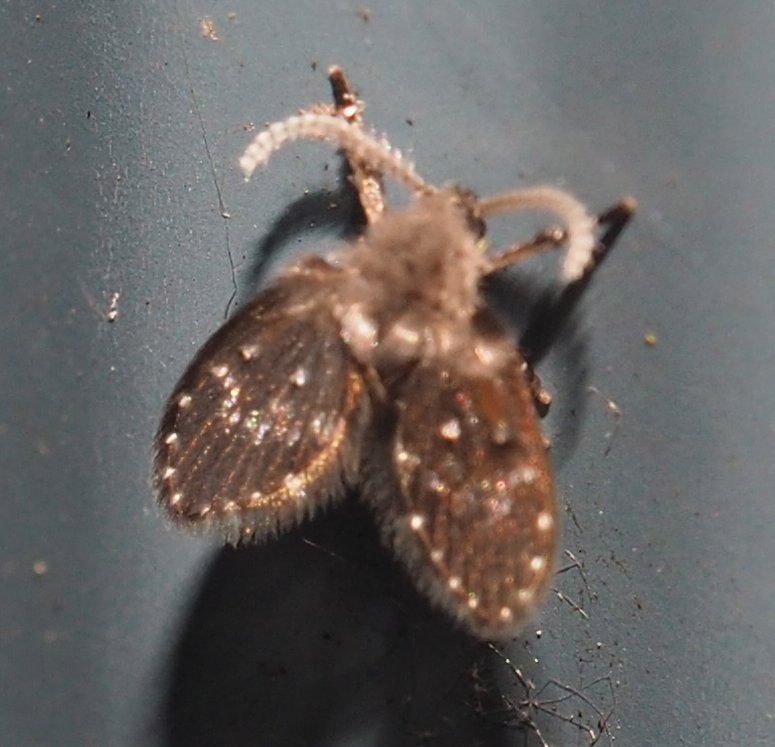

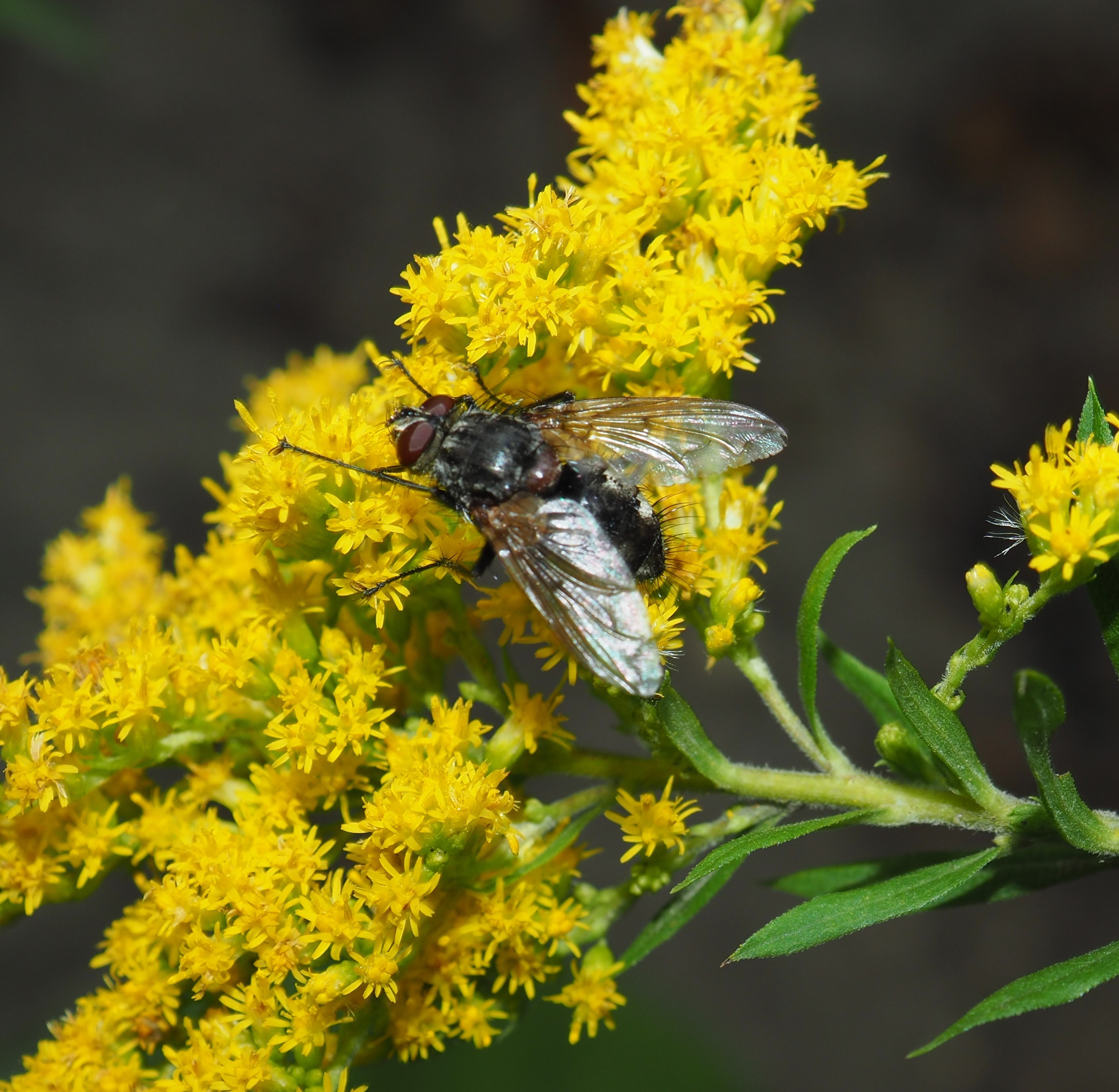
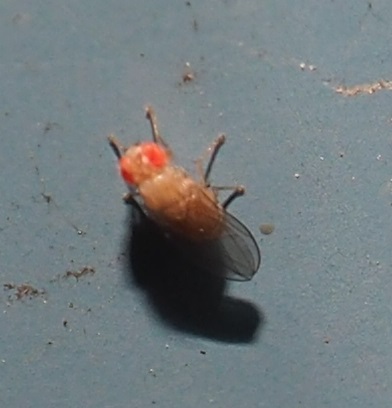
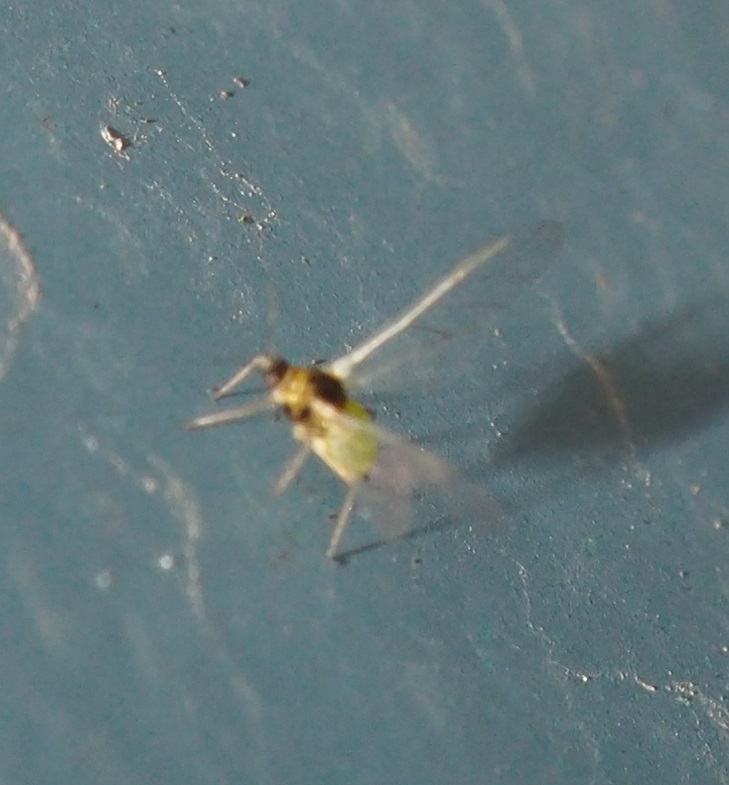
Here are a few interesting specimens. This tiny creature may be an upside-down Pillbug. It has 6 legs on either side! Second looks like a scrubbing pad, but it could also be an egg case of something. Third is a very small animal - I thought at first that it was a fly but now its posture makes me think of a very small wasp or ichneumon. Fourth is probably a "case" for someone.
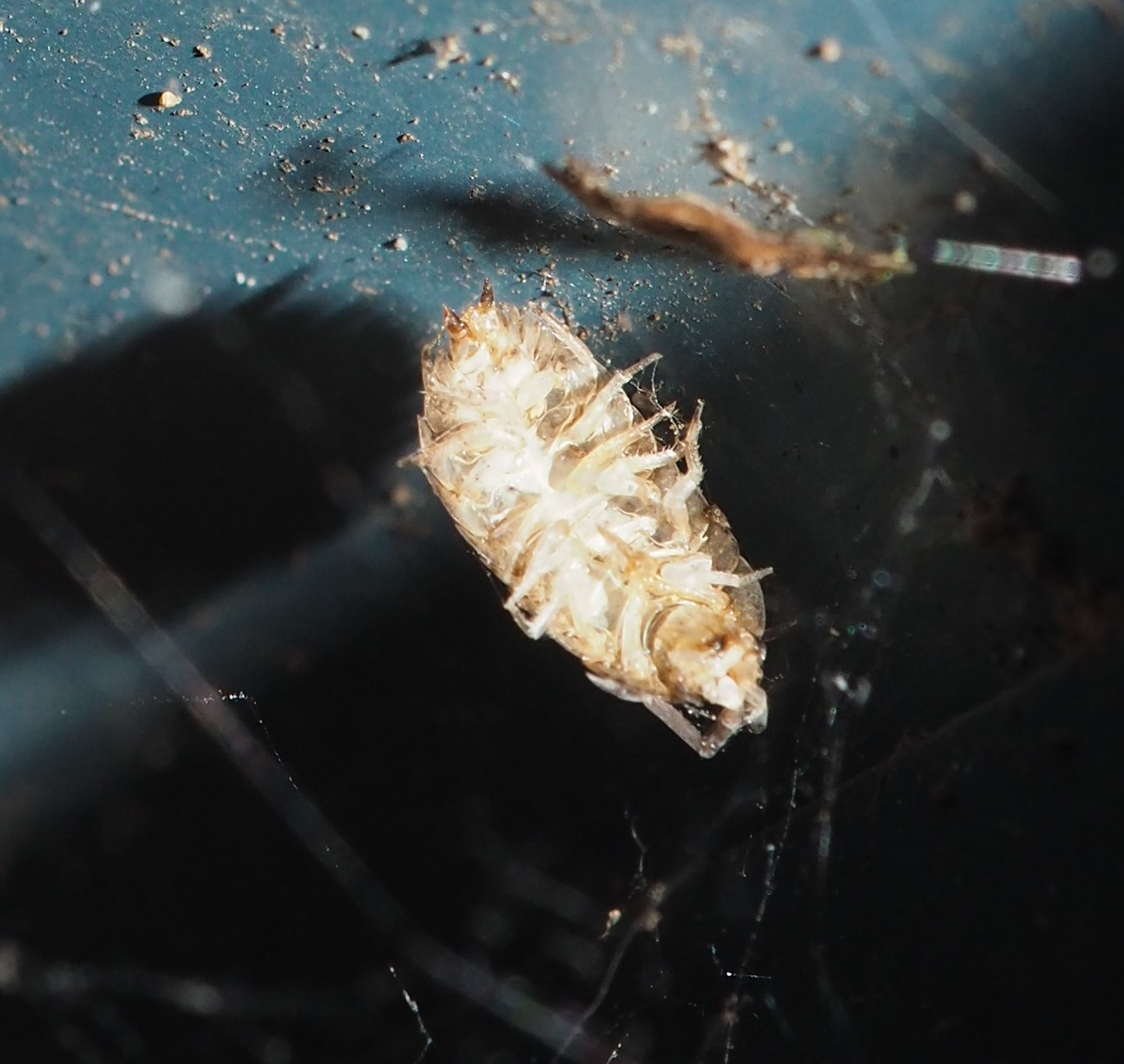
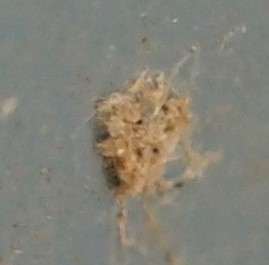
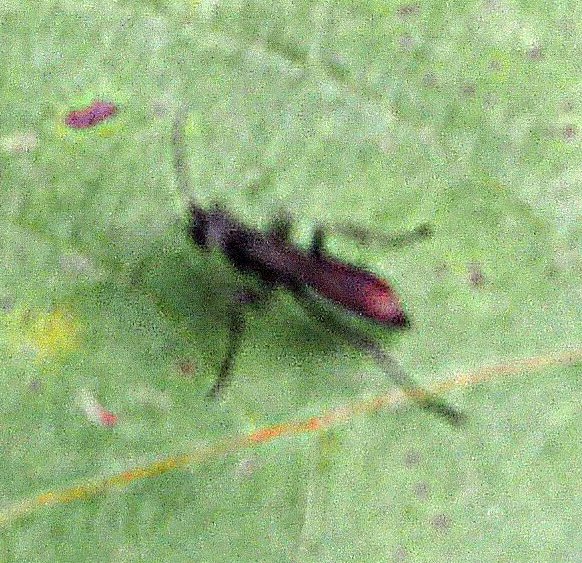
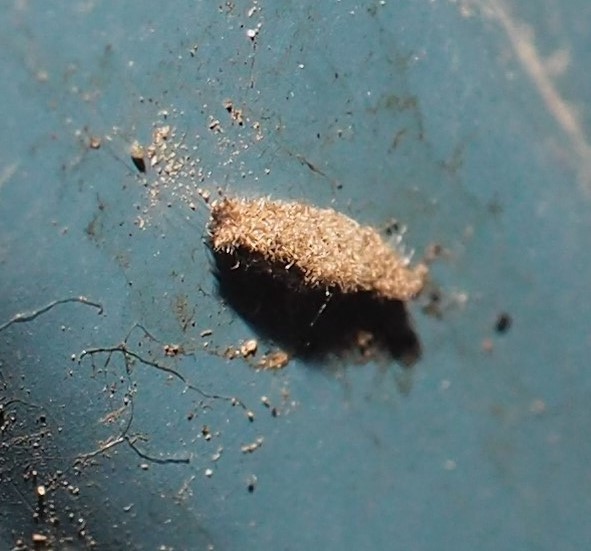
Here we have a few mystery organisms. First almost looks like a manatee swimming just under the water. The second seems to be a worm-like critter trying to turn around. But a Common House Spider has spotted it. Here is a CHS with THREE (count'em THREE) egg cases. No wonder those tiny spiders are always on hand, except maybe for in winter. Quiz for you: is Number 4 also a CHS?

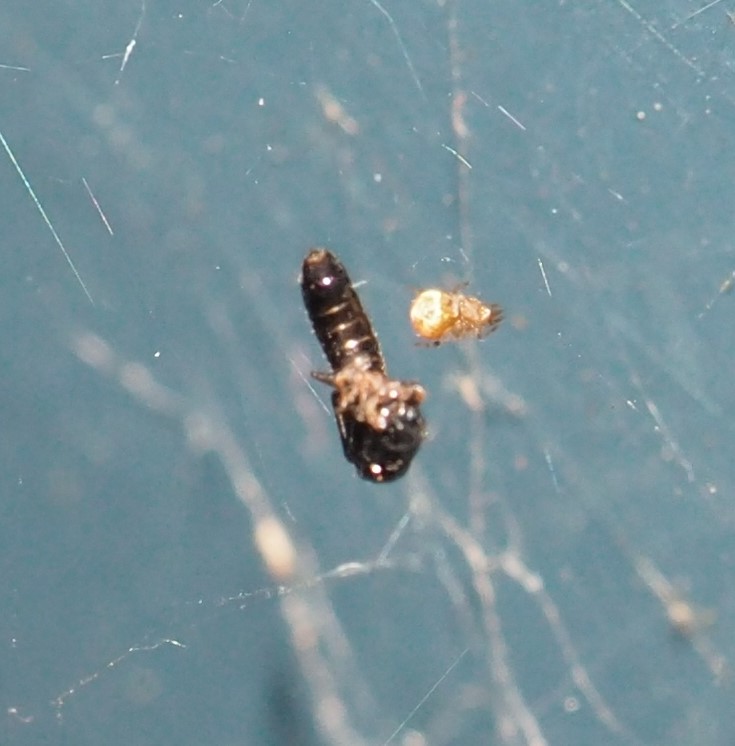
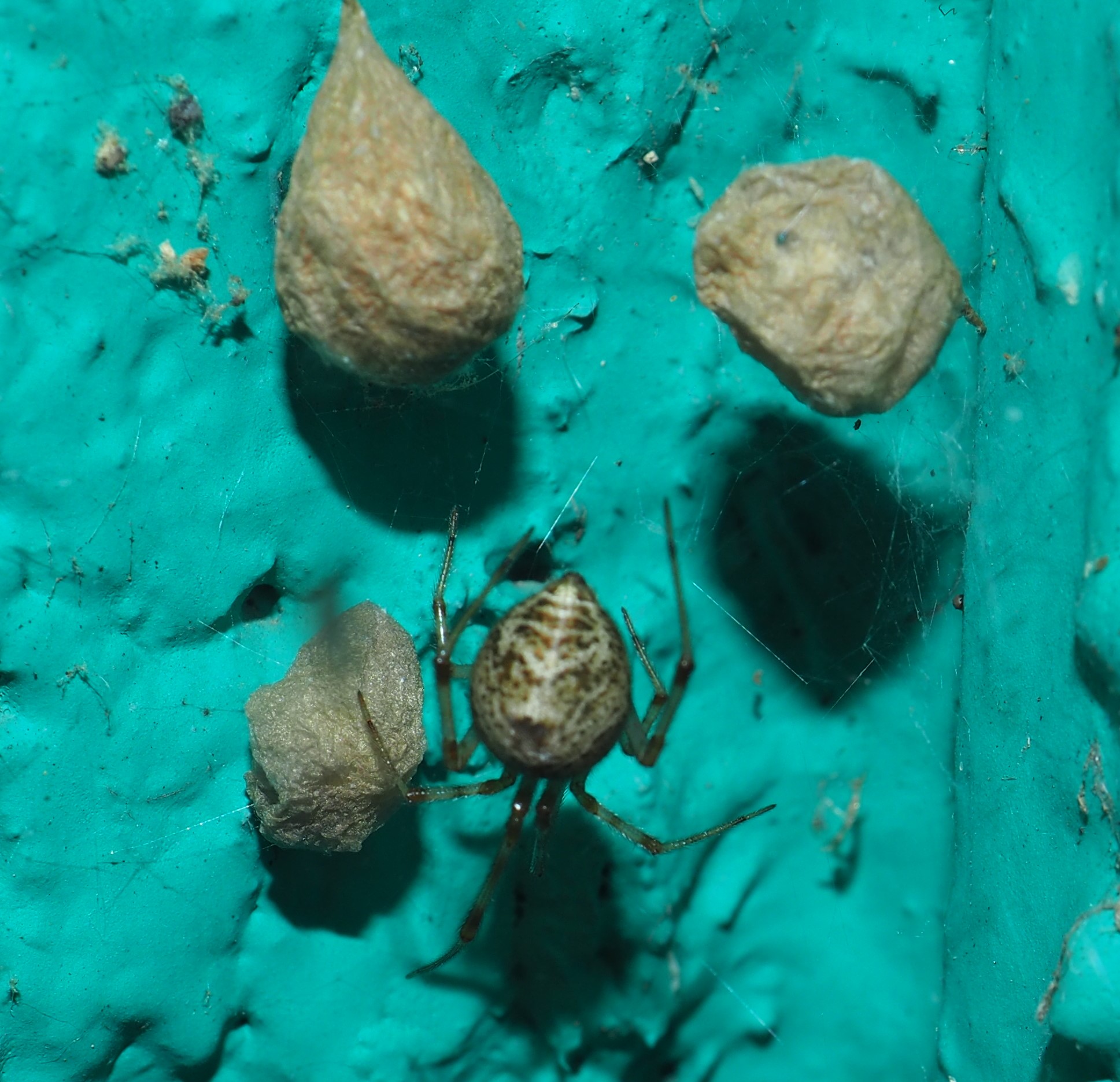
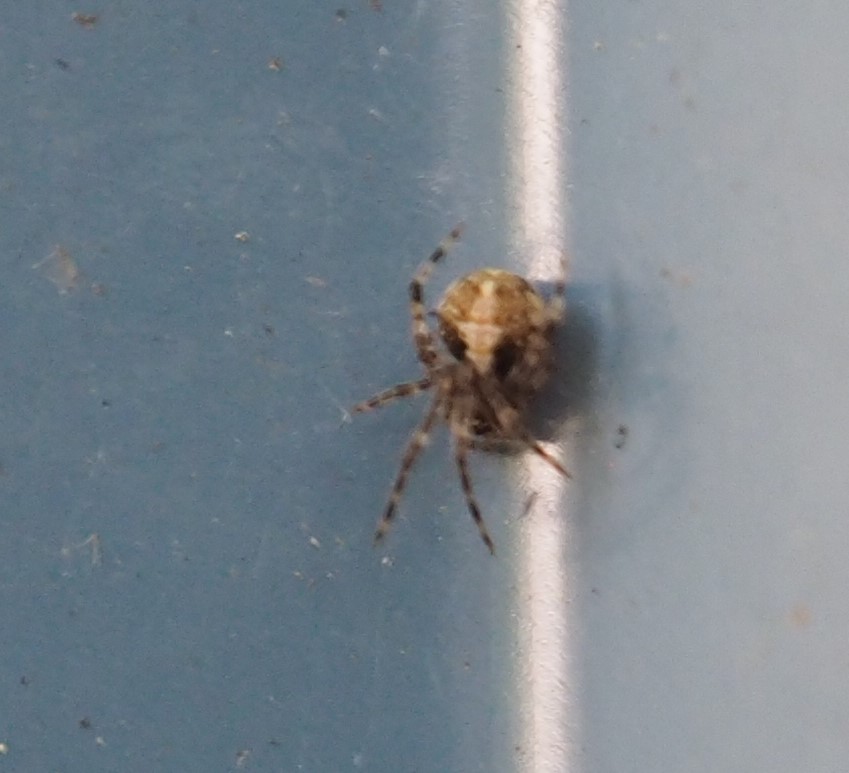
Going back to the little CHS, here is one with a black prey item that looks a lot like the BMSB's of the last week or two. And here I had said that we had no BMSB's this week! The next one has taken on a green tint that I've never seen before. Seen from different angles, their patterns become many. This last one is one of the most natural views it can take on.
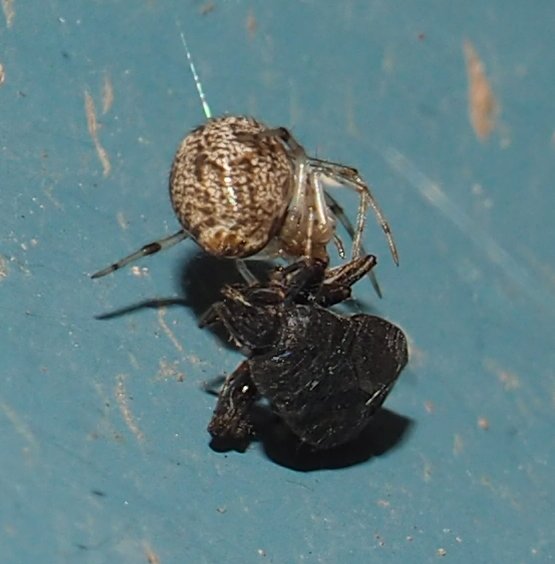
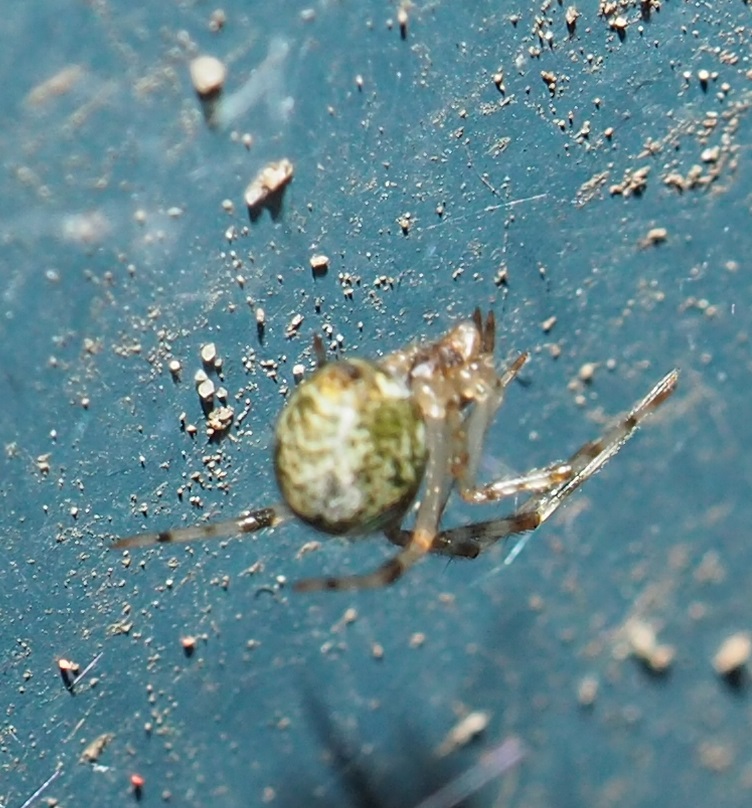
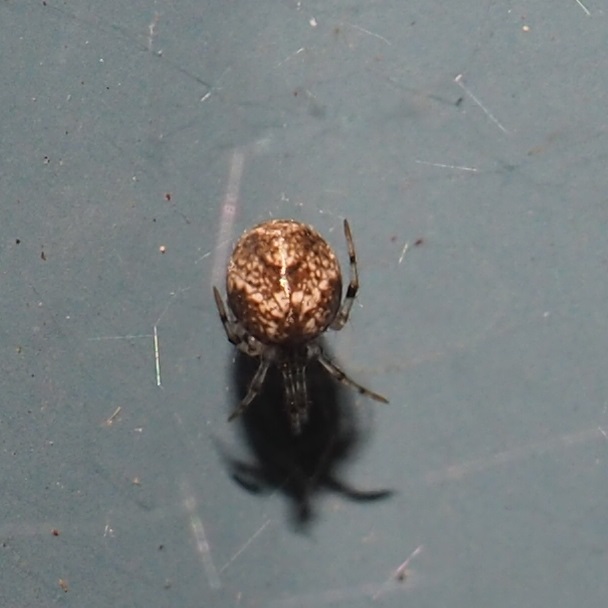
This very large Spider was climbing on the shop wall above my head but I still got a few shots of it. I guessed after looking around in files of spiders that it is a Spotted Orbweaver (Neoscona crucifera) but haven't got a confirmation of that yet.
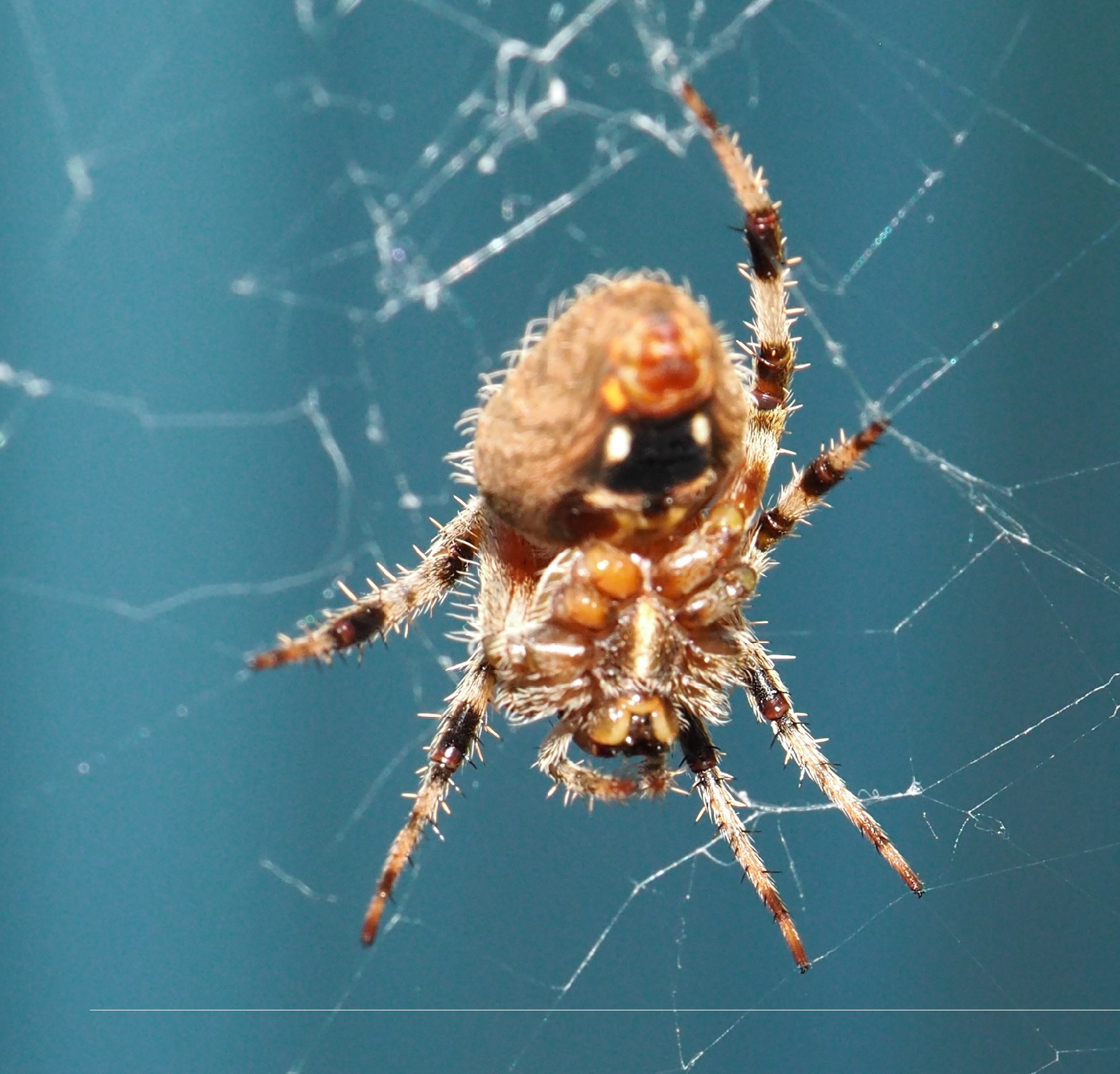
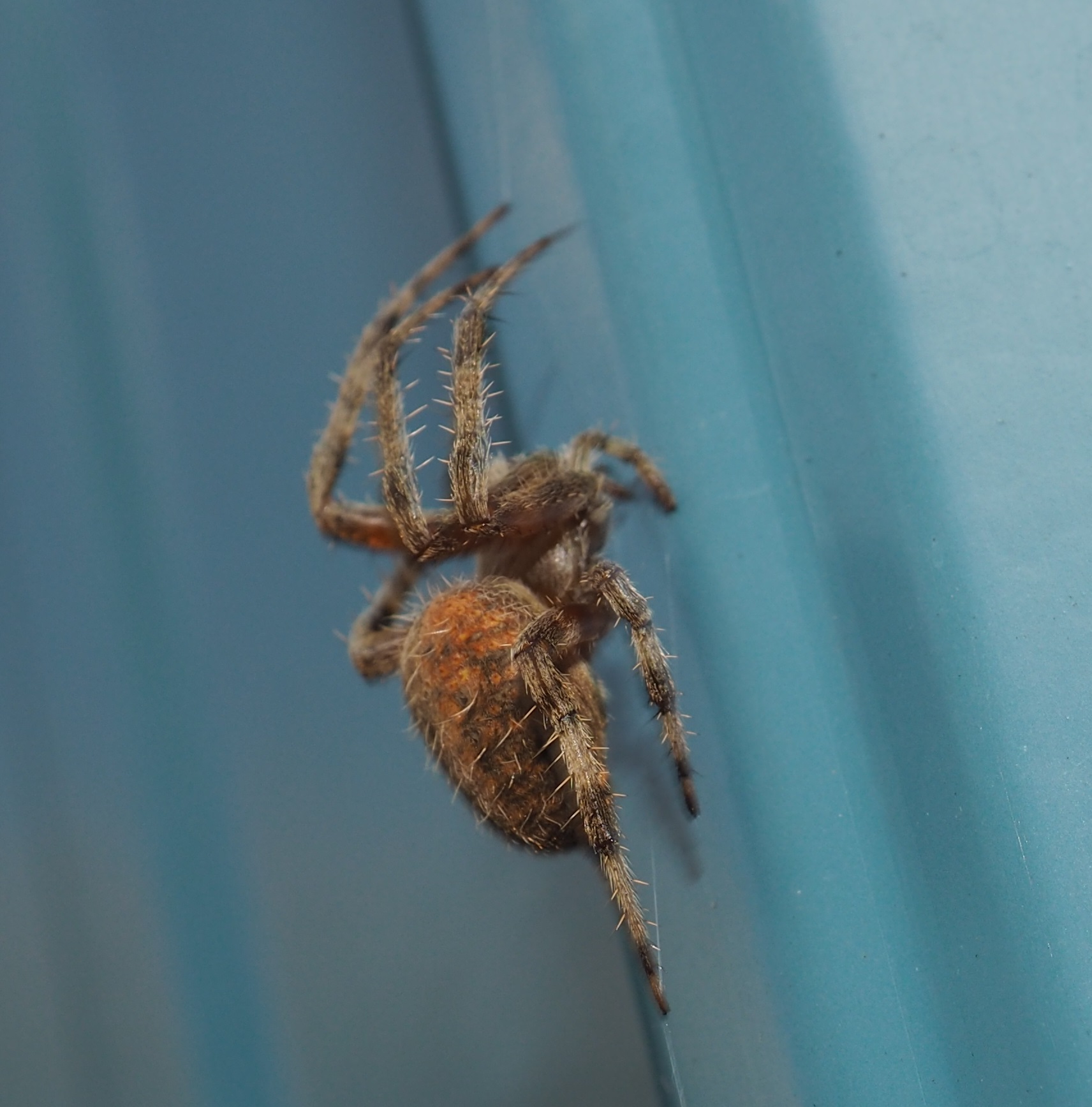
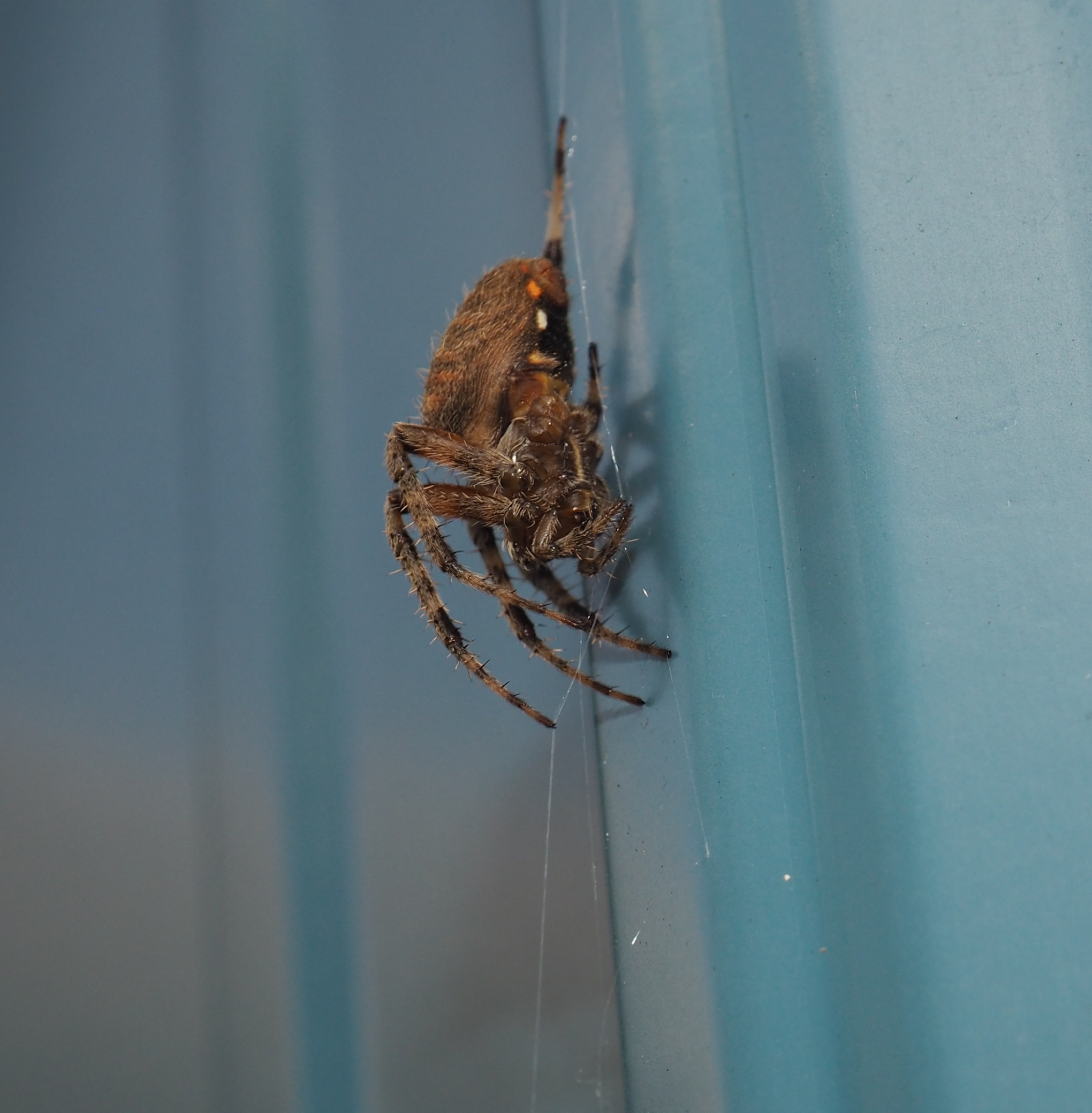
The crab spiders are also wonderfully adroit at changing their appearances. Many of them are masters of camouflage, much like a chameleon. Here this crabber has made itself into a much darker gold than usual. As the light gets brighter the spider lets up on the gold. No matter what color it is, it also has a human-type caricature on its abdomen, with an expression you expect to see up on a roller coaster.
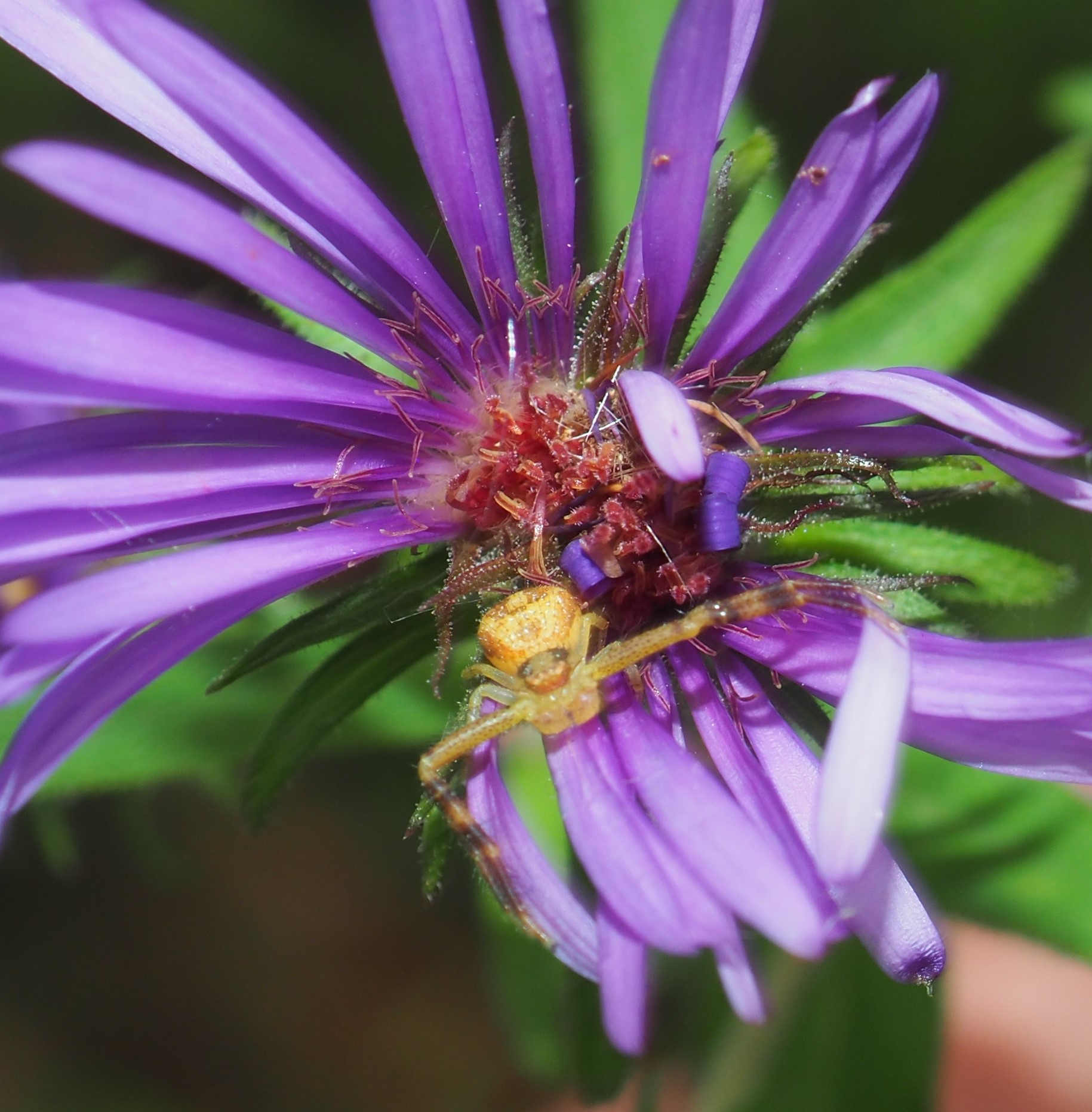
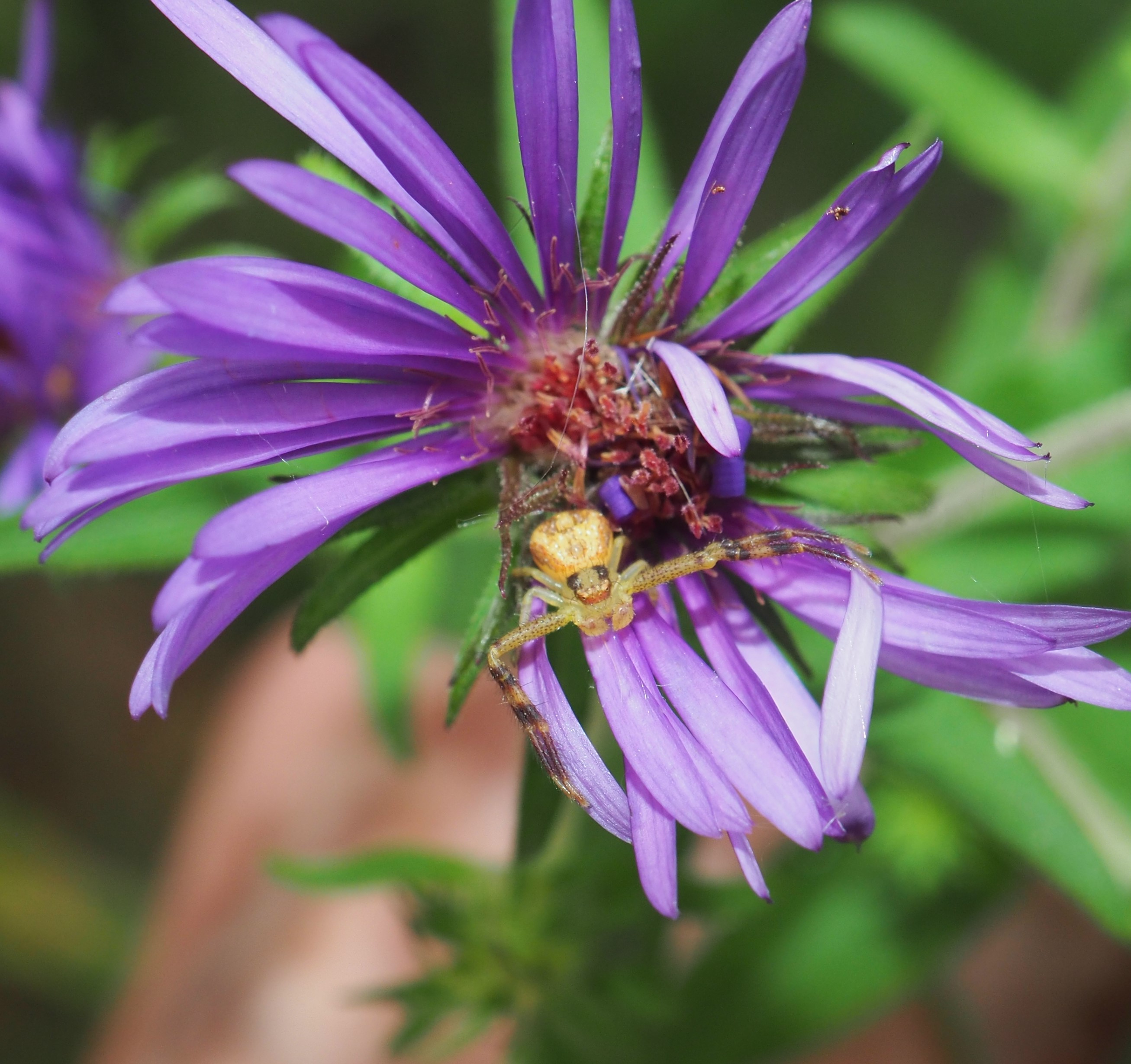
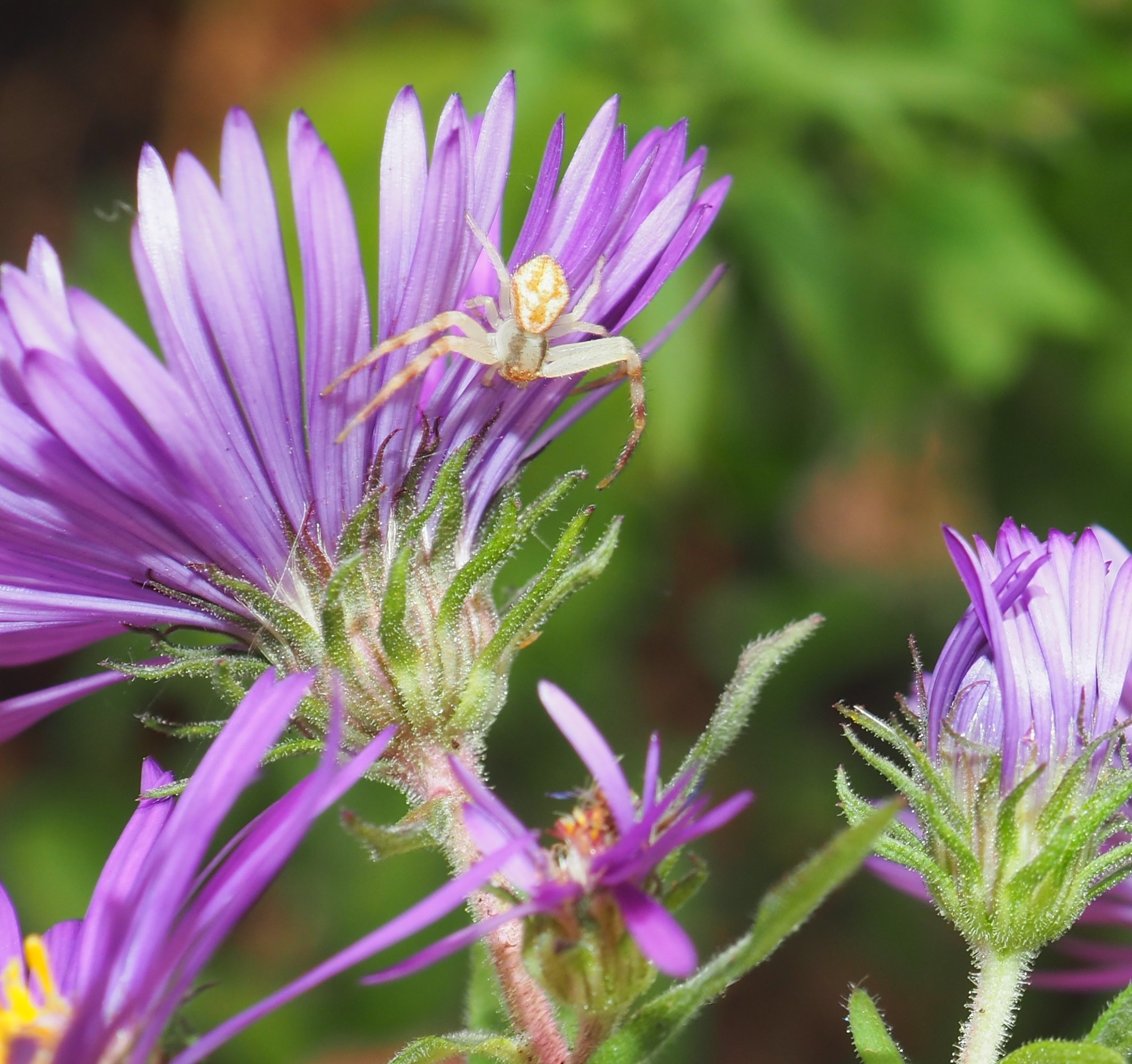
I do believe that the most familiar Jumping Spider around here is Naphrys pulex. It has the wonderfully funny face of a spider in the headlights when taken face-on. But from above, for instance, you can see the usual dorsal pattern. If the spider is male, its face resembles a baby rodent, such as a hamster or mouse.
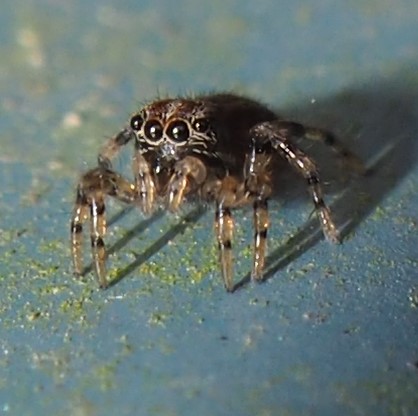
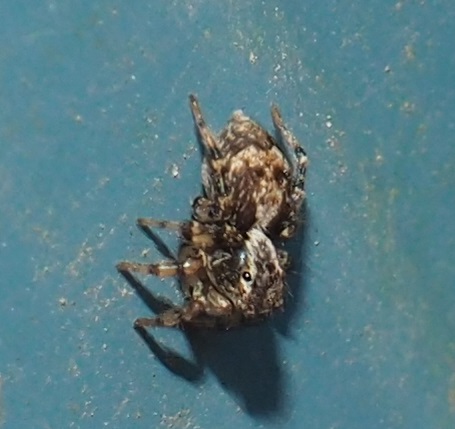
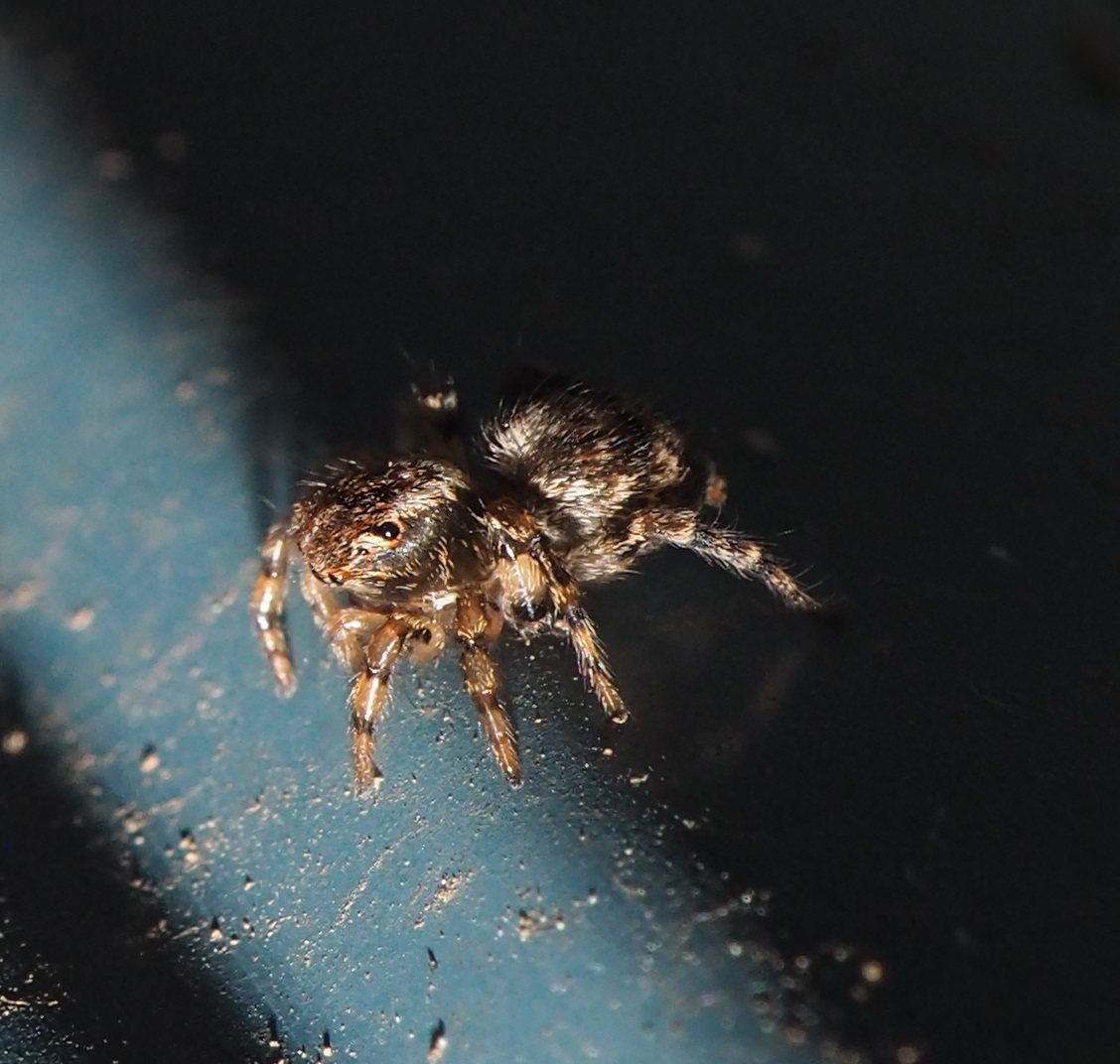
Here are a few new Spiders (to my eyes). First is the one that looks like a spy. Number 2 is a spider with a sac. It seems very clean-cut so that I'm probably the only person in this arm of the Milky Way who doesn't recognize it.
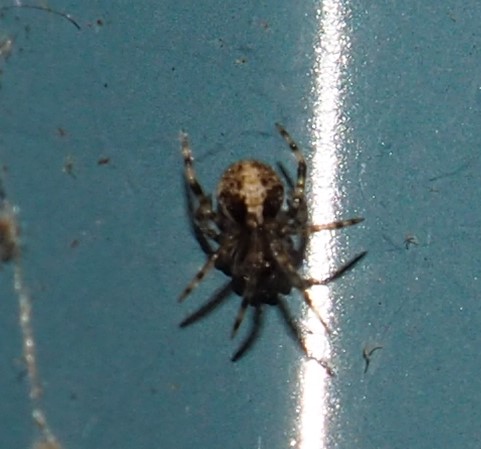
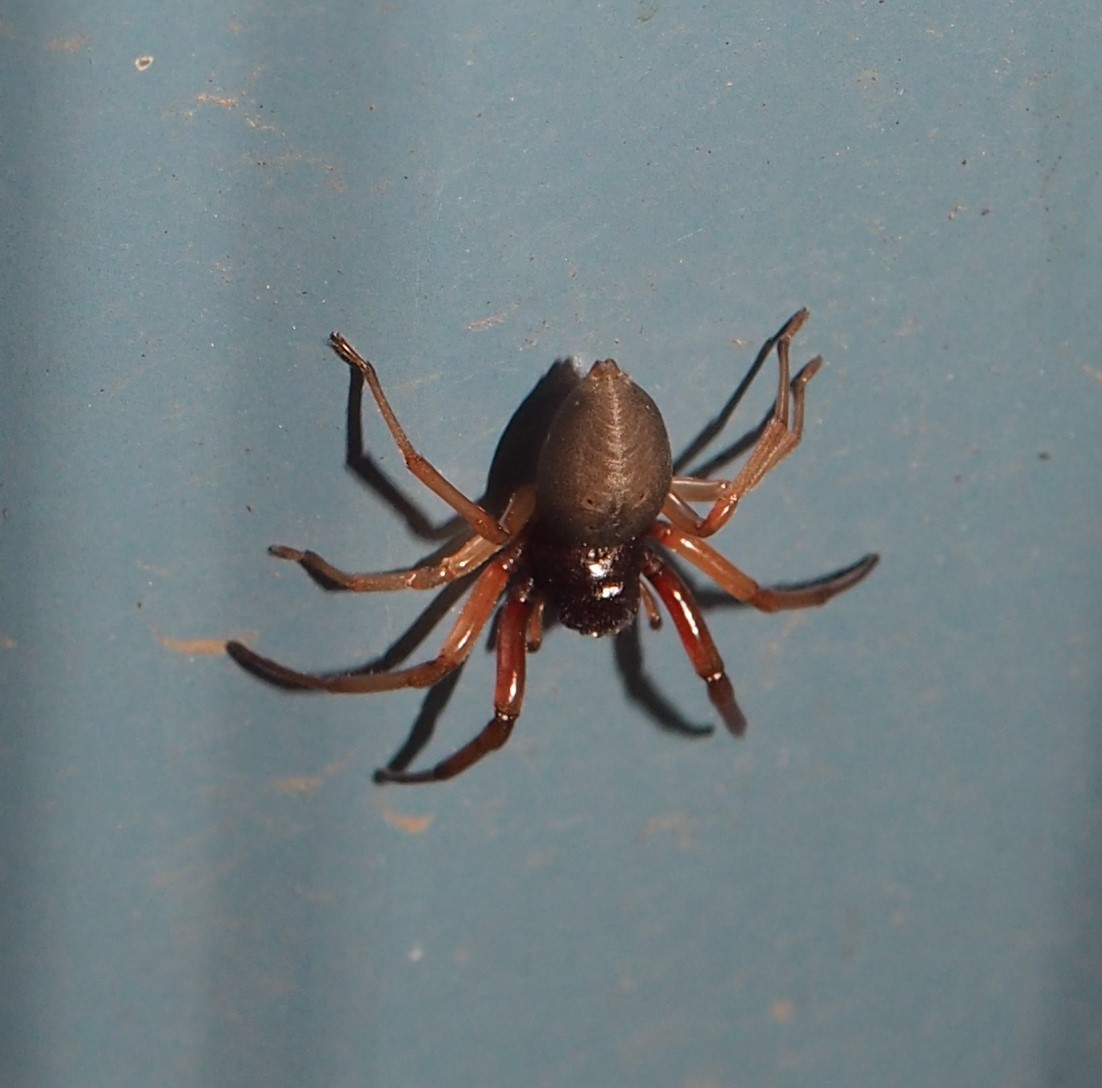
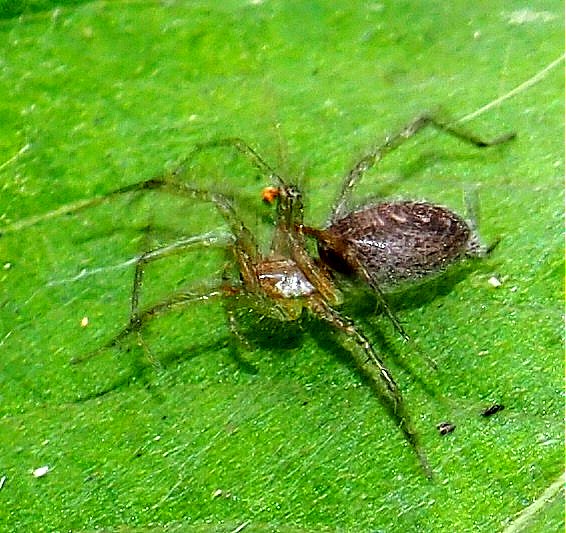
This week was a very steep step down week for most of the wasps that have been gracing the goldenrod. Now that it is mostly all brown, we stopped having the big Wasp Bar and Grill. They love the nectar and they pollinate like crazy for the flowers that attract them. This week we had a few of those little wasps with the pretty patterns of black and yellow, the Ancistrocerus adiabatus. One or two little yellowjackets seem to be very curious about this monstrous HUMAN. I get the feeling they must have a nest somewhere near the path from backyard to gate to the south west plants. Anyway, they fly about 4 inches from my hands. They don't make any fast moves towards me and as I back away, the wasp falls back to its former position (not near me at all). I don't like the feeling but it seems we have some kind of understanding. It has only happened a half-dozen times all summer but today was one of the times. It definitely was not A. adiabatus. So the first and second wasps are the same, but one observation shows the little devil from above. One good sign when you are watching a wasp with an eye to taking its photo is the picture of the "happy face" on the back of the female Ancistrocerus adiabatus. Even though only female wasps sting, when it is this much involved in eating every scrap of wasp food, she is NOT going to waste eating time on you (or me). The second photo shows a face that seems to have a button "nose" and an almost-closed circle of yellow. It is the face of a female A. adibatus. I'm thinking back. I think the wasp that followed me around today was probably Dolichovespula arenaria. It is actually listed with the yellow-jackets. The third photo on this row is of an ichneumonoid. Have you noticed how often these wasps have a nice black and white costume decked out with red limbs or otherwise?
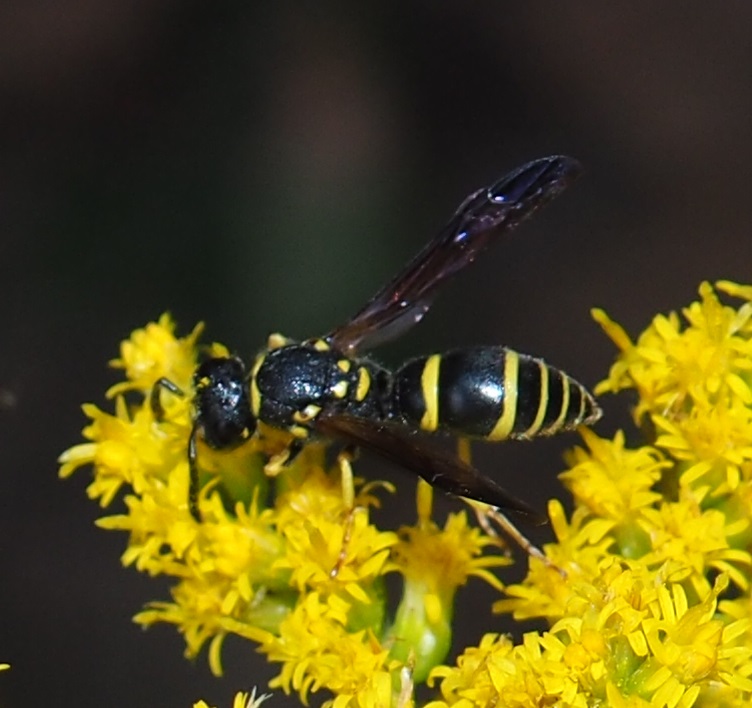


Hey! Isn't it time to show you the fancy scenery around here? Sure it is. It won't hurt you to sustain a few blows to the brain's pleasure center.... Here is one of those strange plants, the Colchicum(s). In spring long floppy leaves come up and then dissolve back into the ground. Then in the fall - here are the big floppy flowers. The False Solomon's Seal is so different from the real Solomon's Seal, but its great bunch of red berries in fall is just spectacular. I showed you this picture from before, but I would like it just as much if the little orange insect turns out to be something completely uninteresting. Just the bravado of the Art Director of the Universe who shared my love of purple and orange in combination.
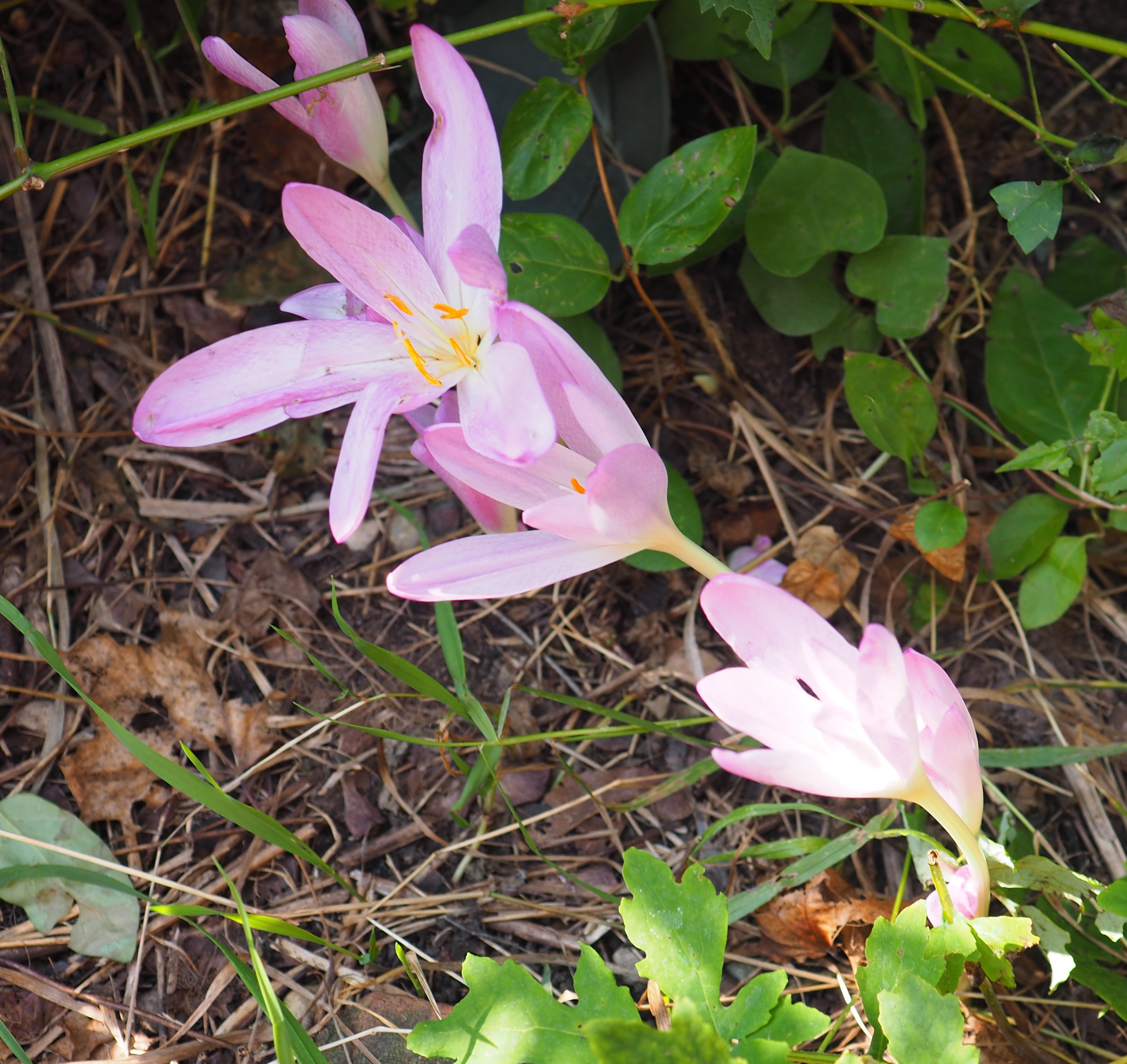


Asters near the pond; a swamp milkweed pod; a lovely white and greenish water lily.
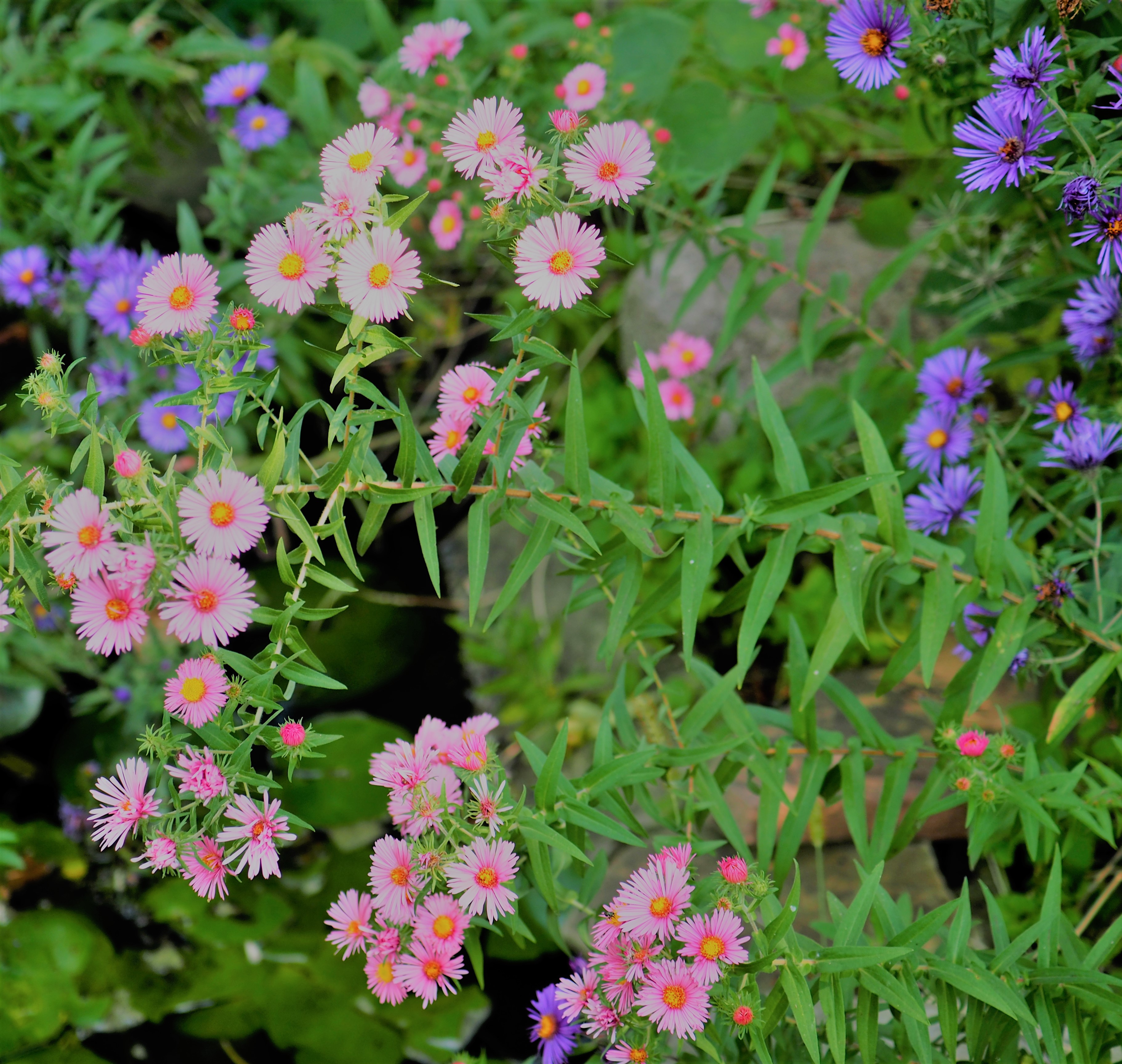

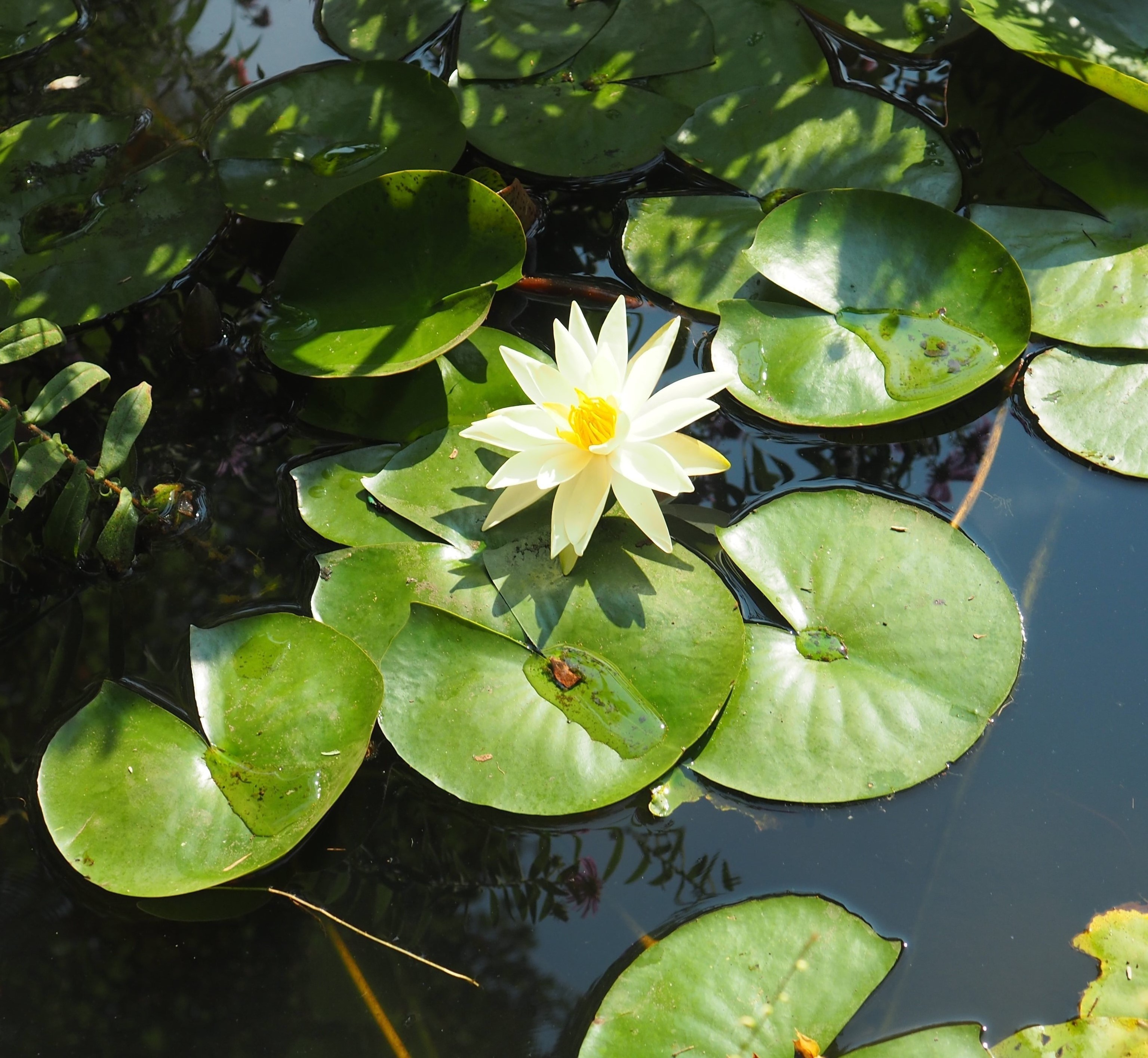
We had a bit of wind a couple of days ago, Friday afternoon I think. When I went out to check around the shop for anything new, I noticed that a very large branch from high up a tree outside the fence had broken off and fallen across my back fence - Here is the picture. That big branch must have torn off the treek about two-thirds of the way up. But think of this: it did not land with enough force to break that fence - or the shop that it fell softly against. There were many saplings back there that bent to take the blow so that the only damage was to the tree. I should have cut them down but they caught the tree quite gently enough so that - really - the branch shattered into a godzillion pieces of Norway maple, which was covered with lichens the length of all those bits of the branch.

One more scene of the asters on the other side of the pond.
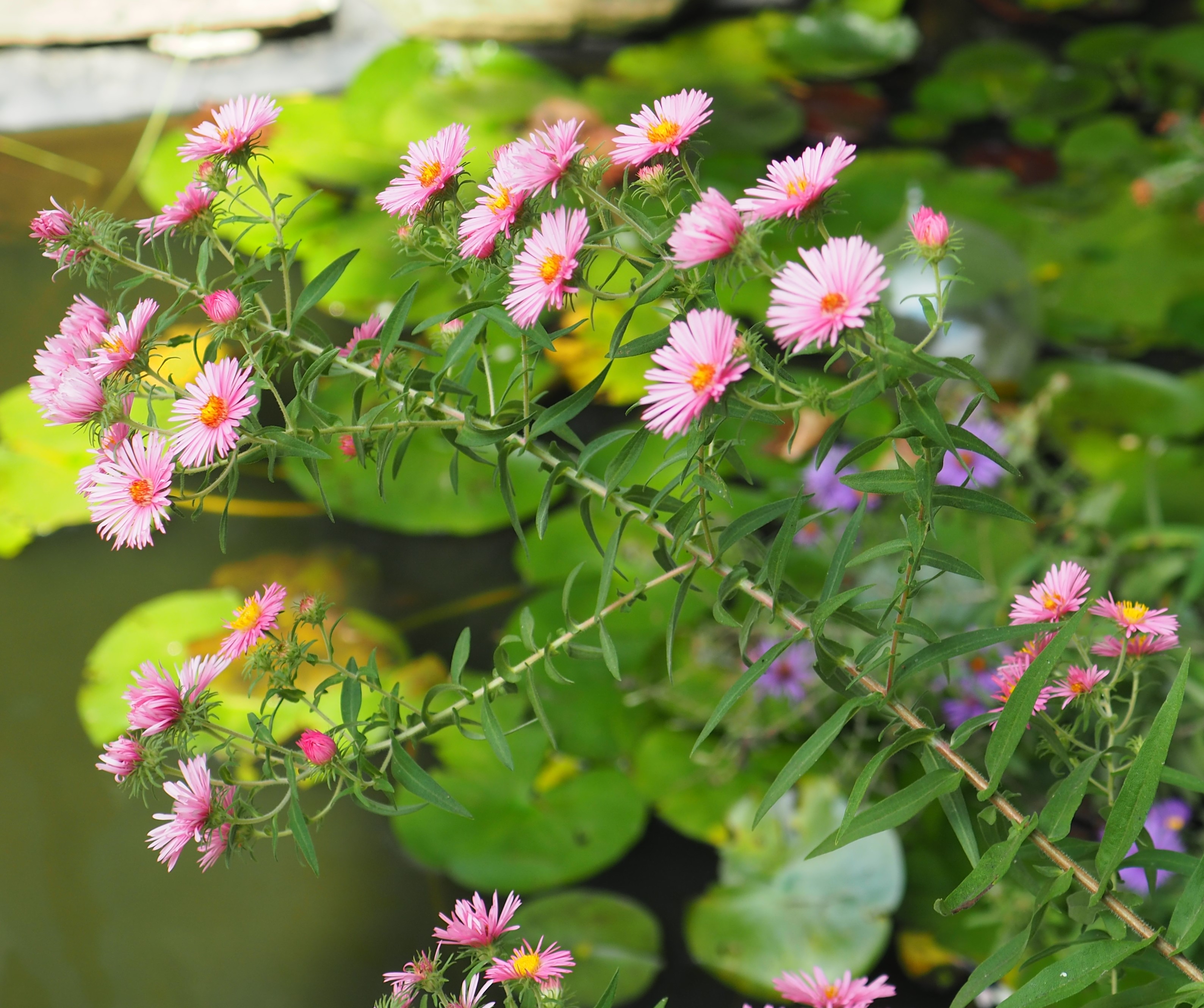
Happy Solstice to everyone! Since Summer came in and just stayed, the feel of cool in the air is amazingly easy to breathe. I hope it's so to everyone. Enjoy the first week of autumn!
Love to everyone,
Martha
Back to September 16, 2018
Forward to September 30, 2018
Back to main menu
copyright Martha O'Kennon 2018
























































































